![]()
By Gypsy Blue Rose

after the rain,
the wet cobblestone streets
are covered
with reminiscence of our love –
standing on the past

| Author Notes |
"Don't cry because it's over, smile because it happened." - Dr. Seuss
TANKA is a Japanese unrhymed love poem having about 12 to 31 syllables usually arranged in five lines. The first English-speaking poets imitated the Japanese models of 5-7-5-7-7 syllabic structure in five lines, but because Japanese syllables are shorter than English syllables the poems were too wordy and choppy. The beginning two lines are descriptive and image-focused, and the third line serves as a transition to the bottom two lines which are reflective using metaphor, simile, or personification. The subject matter varies, but most tanka are emotionally stirring or profound, and many are about love. Tanka originated in the seventh century in the Japanese Imperial Court, where women and men engaged in courtship. click here if you want to read modern tanka examples === click here to read Tanka Society of America === click here if you want to read modern tanka rules Thank you very much for taking the time to read and review my poem. Gypsy "Poetry heals the wounds inflicted by reason." - Novalis |
![]()
By Gypsy Blue Rose

| Author Note: | poem in black font in my author notes |

| Author Notes |
strawberry dusk dust
sprinkled on the bay overflows with tenderness in a true act of unselfish love every night |
![]()
By Gypsy Blue Rose


| Author Notes |
Tanka is a Japanese unrhymed poem having about 12 to 31 syllables usually arranged in five lines and read in about two breaths in length when read aloud. The first poets who wrote tanka imitated the Japanese models of a 5-7-5-7-7 syllabic structure in five lines. This resulted in poems that were too long in comparison to Japanese tanka. The first tanka were padded or chopped to meet the fixed number of syllables. Additionally, the third line must transition from the descriptive and image-focused beginning lines into a reflective metaphor, simile, or personification for the closing lines. The subject matter varies, but most tanka are emotionally stirring or profound, and many are about love. click here if you want to read modern tanka examples === click here to read Tanka Society of America === click here if you want to read modern tanka rules
Thank you very much for your time and kind review. Gypsy "The poet waits quietly to paint the unsaid." --Atticus |
![]()
By Gypsy Blue Rose

| Author Note: | For Rules, Please Read My Author Notes |

| Author Notes |
"Do not look for healing at the feet of those who broke you." - Rupi Kaur, milk and honey
Modern Tanka is a Japanese short poem without a rigid set of rules. The first poets who wrote modern tanka imitated the Japanese models of a 5-7-5-7-7 syllabic structure in five lines. This resulted in poems that were too long in comparison to Japanese tanka. They were padded or chopped to meet the fixed number of syllables. During the last 30 years, poets continue to experiment with the modern tanka in English. Basically, it's an untitled free-verse poem having about 12 to 31 syllables usually arranged in five lines and about two breaths in length when read aloud. Modern tanka uses metaphor, simile, or personification. The subject matter varies, but most tanka are emotionally stirring or profound, and many are about love. Tanka is usually written in the first-person narrator's point of view. click here if you want to read modern tanka examples === click here to read Tanka Society of America === click here if you want to read modern tanka rules Thank you very much for your time and kind review. Gypsy "The poet waits quietly to paint the unsaid." --Atticus picture from pinterest |
![]()
By Gypsy Blue Rose

| Author Note: | for my kindred spirit |

| Author Notes |
cerulean is a shade of blue
Tanka is a Japanese unrhymed poem having about 12 to 31 syllables usually arranged in five lines and read in about two breaths in length when read aloud. The first poets who wrote tanka imitated the Japanese models of a 5-7-5-7-7 syllabic structure in five lines. This resulted in poems that were too long in comparison to Japanese tanka. The first tanka were padded or chopped to meet the fixed number of syllables. Additionally, the third line must transition from the descriptive and image-focused beginning lines into a reflective metaphor, simile, or personification for the closing lines. The subject matter varies, but most tanka are emotionally stirring or profound, and many are about love. click here if you want to read modern tanka examples === click here to read Tanka Society of America === click here if you want to read modern tanka rules Thank you very much for your time and kind review. Gypsy "The poet waits quietly to paint the unsaid." --Atticus |
![]()
By Gypsy Blue Rose
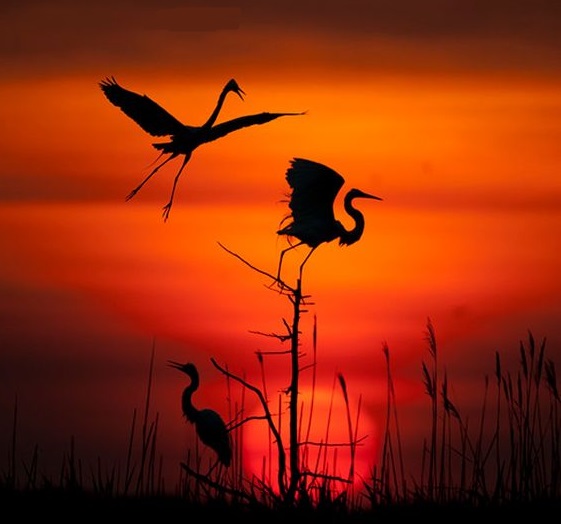
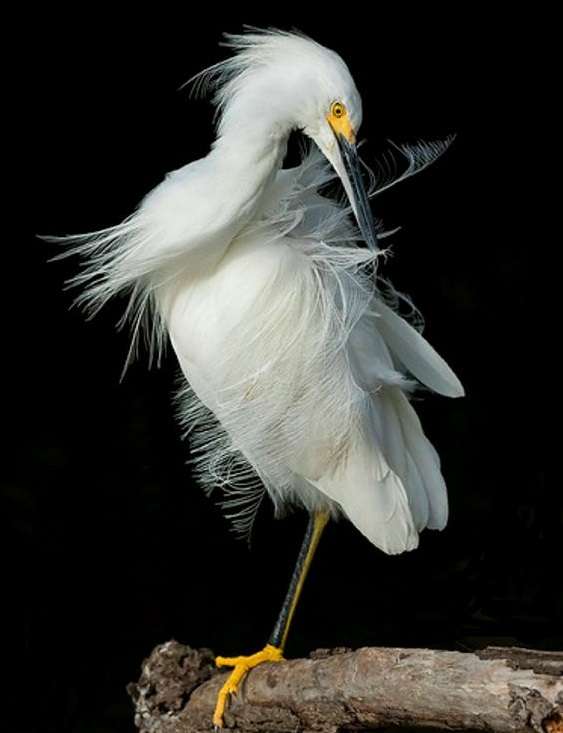
| Author Notes |
Tanka is a Japanese unrhymed poem having about 12 to 31 syllables usually arranged in five lines and read in about two breaths in length when read aloud. The first poets who wrote tanka imitated the Japanese models of a 5-7-5-7-7 syllabic structure in five lines. This resulted in poems that were too long in comparison to Japanese tanka. The first tanka were padded or chopped to meet the fixed number of syllables. Additionally, the third line must transition from the descriptive and image-focused beginning lines into a reflective metaphor, simile, or personification for the closing lines. The subject matter varies, but most tanka are emotionally stirring or profound, and many are about love. click here if you want to read modern tanka examples === click here to read Tanka Society of America === click here if you want to read modern tanka rules
Thank you very much for your time and kind review. Gypsy "The poet waits quietly to paint the unsaid." --Atticus |
![]()
By Gypsy Blue Rose

| Author Note: | For Rules, Please Read My Author Notes |
I’ll miss you the most
when dusk descends upon the reeds —
and twilight mist
lies gently on the grass
balancing between day and night
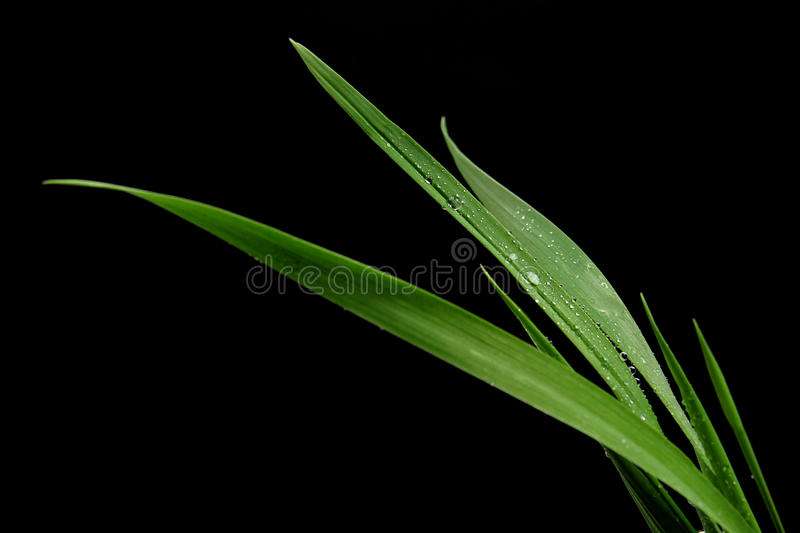
| Author Notes |
Tanka is a Japanese unrhymed poem having about 12 to 31 syllables usually arranged in five lines and read in about two breaths in length when read aloud. The first poets who wrote tanka imitated the Japanese models of a 5-7-5-7-7 syllabic structure in five lines. This resulted in poems that were too long in comparison to Japanese tanka. The first tanka were padded or chopped to meet the fixed number of syllables. Additionally, the third line must transition from the descriptive and image-focused beginning lines into a reflective metaphor, simile, or personification for the closing lines. The subject matter varies, but most tanka are emotionally stirring or profound, and many are about love. click here if you want to read modern tanka examples === click here to read Tanka Society of America === click here if you want to read modern tanka rules
Thank you very much for your time and kind review. Gypsy "The poet waits quietly to paint the unsaid." --Atticus pictures from pinterest |
![]()
By Gypsy Blue Rose

| Author Note: | For Rules, Please Read My Author Notes |
he comes in dreams
while the wishful moon sneaks in —
I wake up wanting more,
still feeling him between my legs
breasts on fire ... bed aflame

| Author Notes |
Tanka is a Japanese unrhymed poem having about 12 to 31 syllables usually arranged in five lines and read in about two breaths in length when read aloud. The first poets who wrote tanka imitated the Japanese models of a 5-7-5-7-7 syllabic structure in five lines. This resulted in poems that were too long in comparison to Japanese tanka. The first tanka were padded or chopped to meet the fixed number of syllables. Additionally, the third line must transition from the descriptive and image-focused beginning lines into a reflective metaphor, simile, or personification for the closing lines. The subject matter varies, but most tanka are emotionally stirring or profound, and many are about love. click here if you want to read modern tanka examples === click here to read Tanka Society of America === click here if you want to read modern tanka rules
Thank you very much for your time and kind review. Gypsy "The poet waits quietly to paint the unsaid." --Atticus painting by Ikenaga Yasunari |
![]()
By Gypsy Blue Rose
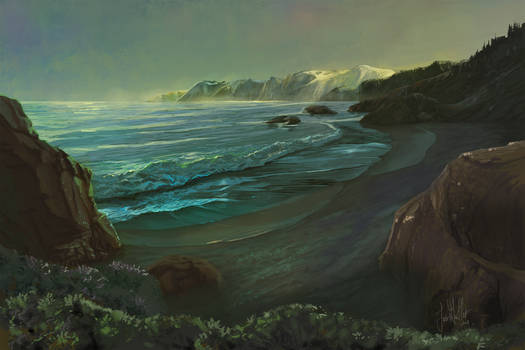
| Author Note: | For Rules, Please Read My Author Notes |
breezes caress
shells and pebbles on the sand
and sea scent permeates
mangrove and shore’s seagrass —
beaches’ love affair
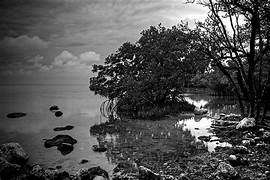
| Author Notes |
Mangroves and seagrasses grow on the coastal strands and dunes
Tanka is a Japanese unrhymed poem having about 12 to 31 syllables usually arranged in five lines and read in about two breaths in length when read aloud. The first poets who wrote tanka imitated the Japanese models of a 5-7-5-7-7 syllabic structure in five lines. This resulted in poems that were too long in comparison to Japanese tanka. The first tanka were padded or chopped to meet the fixed number of syllables. Additionally, the third line must transition from the descriptive and image-focused beginning lines into a reflective metaphor, simile, or personification for the closing lines. The subject matter varies, but most tanka are emotionally stirring or profound, and many are about love. click here if you want to read modern tanka examples === click here to read Tanka Society of America === click here if you want to read modern tanka rules Thank you very much for your time and kind review. Gypsy "The poet waits quietly to paint the unsaid." --Atticus pictures from deviantart |
![]()
By Gypsy Blue Rose

| Author Note: | For Rules, Please Read My Author Notes |
today I’m still yours—
pieces of my heart scattered
at the ocean’s edge
where dying embers of love rest
as my aimless life drifts

| Author Notes |
today I'm still yours-
pieces of my heart scattered at the ocean's edge where my love still burns as my aimless life drifts√?¬† Tanka is a Japanese unrhymed poem having about 12 to 31 syllables usually arranged in five lines and read in about two breaths in length when read aloud. The first poets who wrote tanka imitated the Japanese models of a 5-7-5-7-7 syllabic structure in five lines. This resulted in poems that were too long in comparison to Japanese tanka. The first tanka were padded or chopped to meet the fixed number of syllables. Additionally, the third line must transition from the descriptive and image-focused beginning lines into a reflective metaphor, simile, or personification for the closing lines. The subject matter varies, but most tanka are emotionally stirring or profound, and many are about love. click here if you want to read modern tanka examples === click here to read Tanka Society of America === click here if you want to read modern tanka rules Thank you very much for your time and kind review. Gypsy "The poet waits quietly to paint the unsaid." --Atticus pictures from pinterest |
![]()
By Gypsy Blue Rose
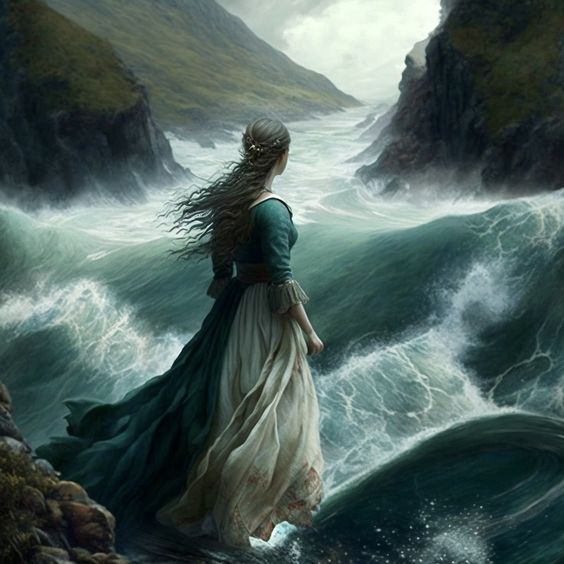
| Author Note: | poem in black font in my author notes |
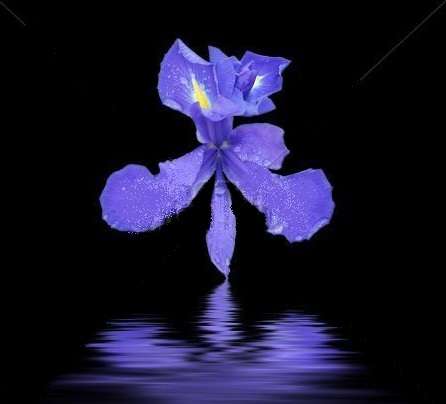
| Author Notes |
across the sea,
this love I feel knows no end so it will go on till the end of time raging against our dismal fate you on another shore and me in mine across the sea Thank you very much for taking the time to read and review my poem. Gypsy |
![]()
By Gypsy Blue Rose
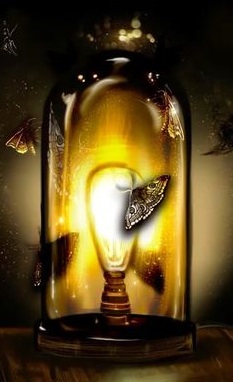
| Author Note: | Rules and poem in black font in My Author Notes |
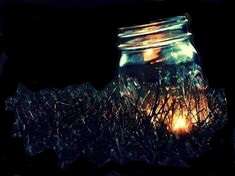
| Author Notes |
coal-shade night
it's hard to catch my breath crying for our lost love¬†‚?? like a moth dying inside a glass my light is a dimming star Tanka is a Japanese unrhymed poem having about 12 to 31 syllables usually arranged in five lines and read in about two breaths in length when read aloud. The first poets who wrote tanka imitated the Japanese models of a 5-7-5-7-7 syllabic structure in five lines. This resulted in poems that were too long in comparison to Japanese tanka. The first tanka were padded or chopped to meet the fixed number of syllables. Additionally, the third line must transition from the descriptive and image-focused beginning lines into a reflective metaphor, simile, or personification for the closing lines. The subject matter varies, but most tanka are emotionally stirring or profound, and many are about love. click here if you want to read modern tanka examples === click here to read Tanka Society of America === click here if you want to read modern tanka rules Thank you very much for your time and kind review. Gypsy "The poet waits quietly to paint the unsaid." --Atticus pictures from pinterest |
![]()
By Gypsy Blue Rose

| Author Note: | Dedicated to my kind Constant Reviewers |

| Author Notes |
Those of you who read my poems regularly and know my work know that most of my Tanka poems are about love's grief, passion, loss, etc ... I want to let you know that Tanka is my favorite type of poem because I can relate to it so much. I am from Spain, Spaniers are very passionate and dramatic people so it's only natural that I would be so attracted to this beautiful poetic form.
The best tanka poets from Japan are women and they write very similar poems of passion and loss. Here are a couple of examples: First: did he appear because I fell asleep thinking of him? if only I'd known I was dreaming, I'd never have awaken by Ono No Komachi, from her book: "The Ink Dark Moon" Love Poems, Women of the Ancient Court of Japan, 800 century (you can read her book for freefor more information click here ================================================= Second: Pressing my breasts I softly kick aside The curtain of mystery, How deep the crimson Of the flower here by Yosano Akiko, from her book "A life in Vain". She was considered to be one of the best-known female poets from the 20th century. for more information click here --- to read her poems click here --- to read her poems click here ============================================= GOGYOHKA is a type of tanka from the 20th century. It's composed of a five-line free-style Japanese poetic form but with no strict rules on syllable count but as brief as possible. source = writers digest ===source=wikipedia Thank you for taking the time to read and review my poem. Gypsy "Ever has it been that love knows not its own depth until the hour of separation." - Kahlil Gibran |
![]()
By Gypsy Blue Rose

| Author Note: | For Rules, Please Read My Author Notes |
| Author Notes |
Tanka is a Japanese unrhymed poem having about 12 to 31 syllables usually arranged in five lines and read in about two breaths in length when read aloud. The first poets who wrote tanka imitated the Japanese models of a 5-7-5-7-7 syllabic structure in five lines. This resulted in poems that were too long in comparison to Japanese tanka. The first tanka were padded or chopped to meet the fixed number of syllables. Additionally, the third line must transition from the descriptive and image-focused beginning lines into a reflective metaphor, simile, or personification for the closing lines. The subject matter varies, but most tanka are emotionally stirring or profound, and many are about love. click here if you want to read modern tanka examples === click here to read Tanka Society of America === click here if you want to read modern tanka rules
Thank you very much for your time and kind review. Gypsy "The poet waits quietly to paint the unsaid." --Atticus art by Ikenaga Yasunari |
![]()
By Gypsy Blue Rose

| Author Note: | Rules and poem in My Author Notes |
my yearning for you
waits where the sun meets the sea
every night -
a need tangled in love poems
written with dead cinders
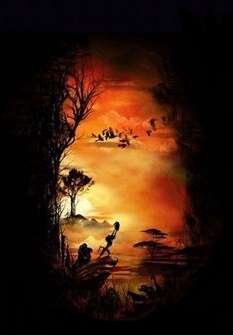
| Author Notes |
yearning for you
waits where the sun meets the sea every night - my need tangled in love poems written with dead cinders Tanka is a Japanese unrhymed poem having about 12 to 31 syllables usually arranged in five lines and read in about two breaths in length when read aloud. The first poets who wrote tanka imitated the Japanese models of a 5-7-5-7-7 syllabic structure in five lines. This resulted in poems that were too long in comparison to Japanese tanka. The first tanka were padded or chopped to meet the fixed number of syllables. Additionally, the third line must transition from the descriptive and image-focused beginning lines into a reflective metaphor, simile, or personification for the closing lines. The subject matter varies, but most tanka are emotionally stirring or profound, and many are about love. click here if you want to read modern tanka examples === click here to read Tanka Society of America === click here if you want to read modern tanka rules Thank you very much for your time and kind review. Gypsy "The poet waits quietly to paint the unsaid." --Atticus pictures from pinterest |
![]()
By Gypsy Blue Rose
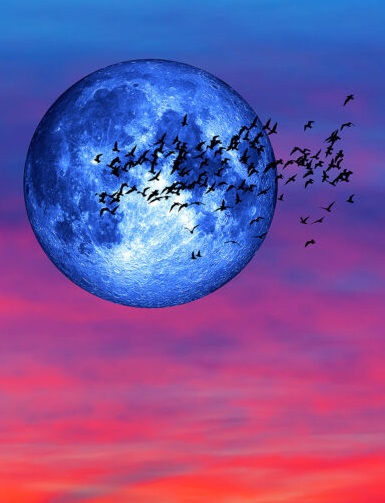
| Author Note: | For Rules, Please Read My Author Notes |
drifting aimlessly
on a turquoise sea of tears
without an oar —
the lonely blue moon
my only companion

| Author Notes |
I write my Tanka Poems in the classical style of Japanese women tanka poets. The classical tanka themes are about passion, love, loneliness, and loss. A couple of my favorite poets are Ono No Komachi, from the 800 century her poems and Yosano Akiko more information
Tanka is a Japanese unrhymed poem having about 12 to 31 syllables usually arranged in five lines and read in about two breaths in length when read aloud. The first poets who wrote tanka imitated the Japanese models of a 5-7-5-7-7 syllabic structure in five lines. This resulted in poems that were too long in comparison to Japanese tanka. The first tanka was padded or chopped to meet the fixed number of syllables. Additionally, the third line must transition from the descriptive and image-focused beginning lines into a reflective metaphor, simile, or personification for the closing lines. The subject matter varies, but most tanka are emotionally stirring or profound, and many are about love. click here if you want to read modern tanka examples === click here to read Tanka Society of America === click here if you want to read modern tanka rules Thank you very much for your time and kind review. Gypsy "The poet waits quietly to paint the unsaid." --Atticus pictures from pinterest |
![]()
By Gypsy Blue Rose
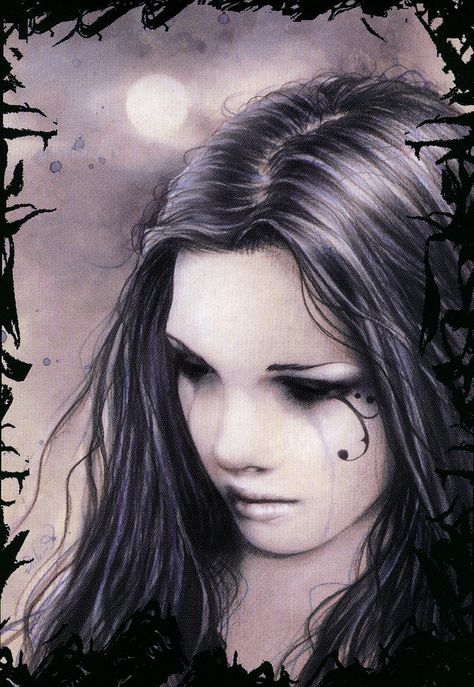
I see you at the beach
every night crying for him
and I know —
your heart is on the mend
so I’ll wait with the hazy moon
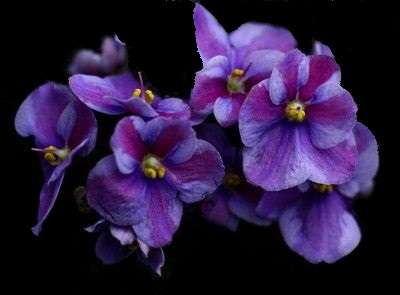
| Author Notes |
Tanka is a Japanese unrhymed poem having about 12 to 31 syllables usually arranged in five lines and read in about two breaths in length when read aloud. The first poets who wrote tanka imitated the Japanese models of a 5-7-5-7-7 syllabic structure in five lines. This resulted in poems that were too long in comparison to Japanese tanka. The first tanka were padded or chopped to meet the fixed number of syllables. Additionally, the third line must transition from the descriptive and image-focused beginning lines into a reflective metaphor, simile, or personification for the closing lines. The subject matter varies, but most tanka are emotionally stirring or profound, and many are about love. click here if you want to read modern tanka examples === click here to read Tanka Society of America === click here if you want to read modern tanka rules
WOMAN TANKA POETS I write my Tanka Poems in the classical style of Japanese women tanka poets. The classical tanka themes are about passion, love, loneliness, and loss. A couple of my favorite poets are Ono No Komachi, from the 800 century her poems and Yosano Akiko, 20th century. her poems Thank you very much for your time and kind review. Gypsy "The poet waits quietly to paint the unsaid." --Atticus pictures from pinterest |
![]()
By Gypsy Blue Rose

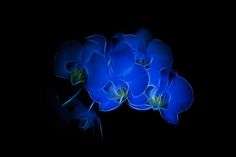
| Author Notes |
The North Star is a star in the northern constellation of Ursa Minor. It's the brightest star in the constellation and is readily visible to the naked eye at night. The stable position of the star in the Northern Sky makes it useful for navigation.
GOGYOHKA is a five-line free-style Japanese poetic form with no strict rules on syllable count but as brief as possible. Any theme. Lines are grammatically connected. Alliteration, personification, and metaphor are okay but never rhyme. Japanese poets have written gogyohka since the 1910s. However, they did not name the form until 1983 by poet Enta Kusakabe. === source = writers digest ===source=wikipedia Thank you for taking the time to read and review my poem. Gypsy √???√??√?¬¢??Ever has it been that love knows not its own depth until the hour of separation.√???√??√?¬¢?? √???√??√?¬¢?? Kahlil Gibran picture from pinterest |
![]()
By Gypsy Blue Rose

| Author Note: | for rules and poem in black font in my author notes |
as you sleep tonight
I’ll be writing love poems
beneath the blue moon—
tangled in thoughts of our
tantric love veiled by stardust

| Author Notes |
Tantra is the science of transforming ordinary lovers into soul mates through lovemaking. It's a Buddhist concept.
as you sleep tonight I'll be writing love poems beneath the blue moon - tangled in thoughts of our tantric love veiled by stardust Tanka is a Japanese unrhymed poem with about 12 to 31 syllables, usually arranged in five lines and read in about two breaths in length. The first poets who wrote tanka imitated the Japanese models of a 5-7-5-7-7 syllabic structure in five lines. This resulted in poems that were too long in comparison to Japanese tanka. The first tanka were padded or chopped to meet the fixed number of syllables. Additionally, the third line must transition from the descriptive and image-focused beginning lines into a reflective metaphor, simile, or personification for the closing lines. The subject matter varies, but most tanka are emotionally stirring or profound, and many are about love. click here if you want to read modern tanka examples === click here to read Tanka Society of America === click here if you want to read modern tanka rules WOMAN TANKA POETS I write my Tanka Poems in the classical style of Japanese women tanka poets. The classical tanka themes are about passion, love, loneliness, and loss. A couple of my favorite poets are Ono No Komachi, from the 800 century her poems and Yosano Akiko, 20th century. her poems Thank you very much for your time and kind review. Gypsy "The poet waits quietly to paint the unsaid." --Atticus pictures from pinteres |
![]()
By Gypsy Blue Rose


| Author Notes |
Madama Butterfly is an opera in three acts by Giacomo Puccini. It is based on the short story by John Luther Long, Madame Butterfly: A Tragedy of Japan, 1900
Synopsis In 1904, a U.S. naval officer named Pinkerton rented a house in Japan, for himself and his soon-to-be wife, "Butterfly". She was a 15-year-old Japanese girl whom he married for convenience, and he intended to leave her once he found a proper American wife. Pinkerton left Butterfly right after the wedding. Three years later, Butterfly was still waiting for Pinkerton to return. When he did return to Japan, he planned to break up with her. He was not aware that Butterfly had his son right after Pinkerton left her. While he was gone, he married an American woman named Kate. When Pinkerton and Kate found out about his son, they decided to take him from Butterfly and raise him in America. But, as Pinkerton sees how Butterfly has decorated the house for his return, he realizes he has made a huge mistake. He admits that he is a coward and cannot face her, leaving Kate to break the news to Butterfly. Agreeing to give up her child if Pinkerton comes himself to see her, she then prays to statues of her ancestral gods, says goodbye to her son, and blindfolds him. She places a small American flag in his hands and goes behind a screen, killing herself with her father's knife. Pinkerton rushes in, but he is too late, and Butterfly dies. wikipedia Tanka is a Japanese unrhymed poem with about 12 to 31 syllables, usually arranged in five lines and read in about two breaths in length. The first poets who wrote tanka imitated the Japanese models of a 5-7-5-7-7 syllabic structure in five lines. This resulted in poems that were too long in comparison to Japanese tanka. The first tanka was padded or chopped to meet the fixed number of syllables. Additionally, the third line must transition from the descriptive and image-focused beginning lines into a reflective metaphor, simile, or personification for the closing lines. The subject matter varies, but most tanka are emotionally stirring or profound, and many are about love. click here if you want to read modern tanka examples === click here to read Tanka Society of America === click here if you want to read modern tanka rules Thank you very much for your time and kind review. Gypsy "Learn all the rules like a pro, so you can break them like an artist." - Picasso |
![]()
By Gypsy Blue Rose
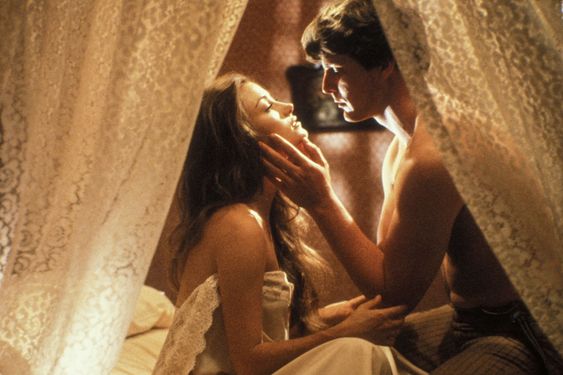
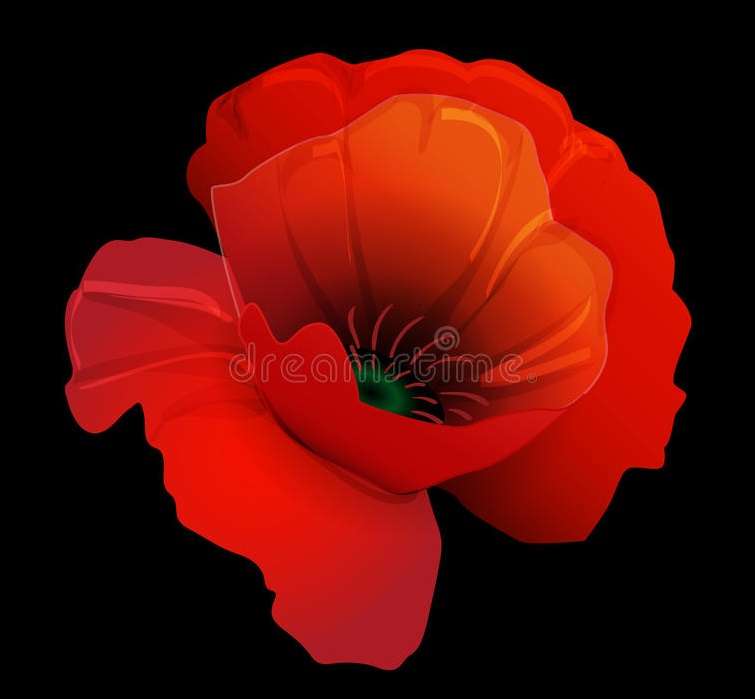
| Author Notes |
Tanka is a Japanese unrhymed poem having about 12 to 31 syllables usually arranged in five lines and read in about two breaths in length when read aloud. The first poets who wrote tanka imitated the Japanese models of a 5-7-5-7-7 syllabic structure in five lines. This resulted in poems that were too long in comparison to Japanese tanka. The first tanka were padded or chopped to meet the fixed number of syllables. Additionally, the third line must transition from the descriptive and image-focused beginning lines into a reflective metaphor, simile, or personification for the closing lines. The subject matter varies, but most tanka are emotionally stirring or profound, and many are about love. click here if you want to read modern tanka examples === click here to read Tanka Society of America === click here if you want to read modern tanka rules
Thank you very much for your time and kind review. Gypsy "The poet waits quietly to paint the unsaid." --Atticus picture from pinterest |
![]()
By Gypsy Blue Rose

| Author Note: | For Robert |

| Author Notes |
"Ever has it been that love knows not its own depth until the hour of separation." - Kahlil Gibran
Gogyohka is a five-line free-style Japanese poetic form with no strict rules on syllable count but as brief as possible. Any theme. Lines are grammatically connected. Alliteration, personification, and metaphor are okay but never rhyme. Japanese poets have written gogyohka since the 1910s. However, they did not name the form until 1983 by poet Enta Kusakabe. === source = writers digest ===source=wikipedia Thank you for taking the time to read and review my poem. Gypsy picture from pinterest |
![]()
By Gypsy Blue Rose

| Author Note: | For Rules, Please Read My Author Notes |
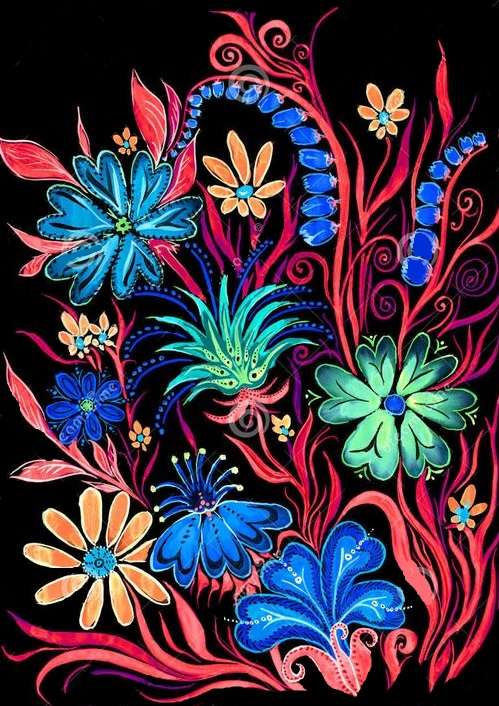
| Author Notes |
Tanka is a Japanese unrhymed poem having about 12 to 31 syllables usually arranged in five lines and read in about two breaths in length when read aloud. The first poets who wrote tanka imitated the Japanese models of a 5-7-5-7-7 syllabic structure in five lines. This resulted in poems that were too long in comparison to Japanese tanka. The first tanka were padded or chopped to meet the fixed number of syllables. Additionally, the third line must transition from the descriptive and image-focused beginning lines into a reflective metaphor, simile, or personification for the closing lines. The subject matter varies, but most tanka are emotionally stirring or profound, and many are about love. click here if you want to read modern tanka examples === click here to read Tanka Society of America === click here if you want to read modern tanka rules
Thank you very much for your time and kind review. Gypsy "The poet waits quietly to paint the unsaid." --Atticus |
![]()
By Gypsy Blue Rose

| Author Note: | poem in black font in my author notes |

| Author Notes |
relentless autumn storm
rages through Central Park sweeping news papers, wet cardboard, and work for food sign tangled with gold and crimson leaves Gogyohka is a five-line free-style Japanese poetic form with no strict rules on syllable count but as brief as possible. Any theme. Lines are grammatically connected. Alliteration, personification, and metaphor are okay but never rhyme. Japanese poets have written gogyohka since the 1910s. However, they did not name the form until 1983 by poet Enta Kusakabe. === source = writers digest ===source=wikipedia Thank you for taking the time to read and review my poem. Gypsy |
![]()
By Gypsy Blue Rose

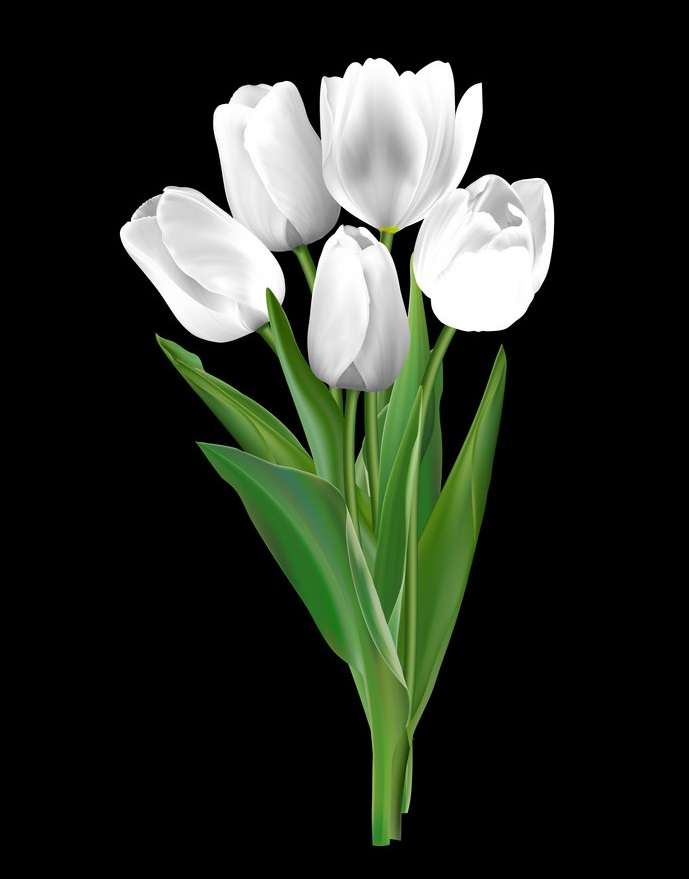
| Author Notes |
Venus is the second planet closest to the sun. Venus is the second brightest object at night only behind the moon. Venus has comet-like tail rays caused by the interaction of its atmosphere with the solar wind and the Sun's magnetic field. ,more info
Gogyohka is a five-line free-style Japanese poetic form with no strict rules on syllable count but as brief as possible. Any theme. Lines are grammatically connected. Alliteration, personification, and metaphor are okay but never rhyme. Japanese poets have written gogyohka since the 1910s. However, they did not name the form until 1983 by poet Enta Kusakabe. === source = writers digest ===href=https://en.wikipedia.org/wiki/Gogy%C5%8Dka>source=wikipedia Thank you for taking the time to read and review my poem. Gypsy "Ever has it been that love knows not its own depth until the hour of separation." -Kahlil Gibran |
![]()
By Gypsy Blue Rose

| Author Note: | For Rules, Please Read My Author Notes |
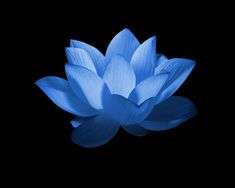
| Author Notes |
Cerulean = deep blue
HAIKU is a Japanese short unrhymed poem that uses imagistic language to express the essence of a deeply felt moment in time. It resonates on a deeper level, leaving the reader enlightened and making an insightful connection between the top two lines and the last one, called the SATORI. It originated in the thirteenth century and was mastered a century later by Matsuo Basho. HAIKU uses a dash to pause before the SATORI.. Haiku is about nature and it alludes to a season of the year. The haiku is written from an observer's point of view. In Japan, haiku is written in 17 syllables and three lines ( 5/7/5) but in English is 17 syllables OR LESS because English syllables are longer than Japanese syllables. Avoid capitalization (except proper names) and punctuation. Avoid metaphor and personification, you write about what you can SEE. === click here to read Haiku Society of America, HAIKU EXAMPLES === click here to read Haiku Society of America HAIKU RULES === click here to read why is 5/7/5 OR LESS rule === Modern Haiku Thank you very much for taking the time to read and review my poem. Gypsy "Poetry heals the wounds inflicted by reason." - Novalis |
![]()
By Gypsy Blue Rose

| Author Note: | poem in black font in my author notes |

| Author Notes |
I dreamt
the sun froze and the sea was aflame for dreaming impossibles I dreamt you loved me Tanka is a Japanese unrhymed poem having about 12 to 31 syllables usually arranged in five lines and read in about two breaths in length when read aloud. The first poets who wrote tanka imitated the Japanese models of a 5-7-5-7-7 syllabic structure in five lines. This resulted in poems that were too long in comparison to Japanese tanka. The first tanka were padded or chopped to meet the fixed number of syllables. Additionally, the third line must transition from the descriptive and image-focused beginning lines into a reflective metaphor, simile, or personification for the closing lines. The subject matter varies, but most tanka are emotionally stirring or profound, and many are about love. click here if you want to read modern tanka examples === click here to read Tanka Society of America === click here if you want to read modern tanka rules Thank you very much for your time and kind review. Gypsy "The poet waits quietly to paint the unsaid." --Atticus picture from pinterest |
![]()
By Gypsy Blue Rose

| Author Note: | tanka rules and poem in black font in my author notes |
take me tonight
at dawn I’ll be gone—
back to my dream world
tangled in thoughts of you
and what could have been
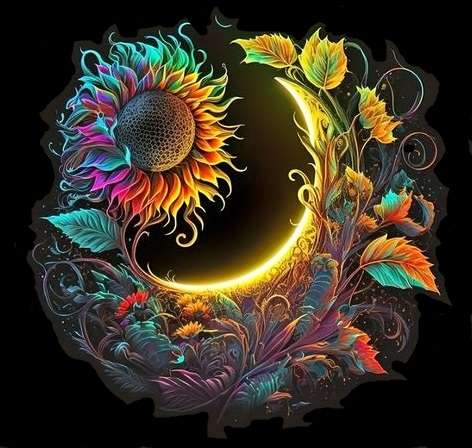
| Author Notes |
take me tonight
at dawn I'll be gone back to my dream world tangled in thoughts of you of what could have been Tanka is a Japanese unrhymed poem having about 12 to 31 syllables usually arranged in five lines and read in about two breaths in length when read aloud. The first poets who wrote tanka imitated the Japanese models of a 5-7-5-7-7 syllabic structure in five lines. This resulted in poems that were too long in comparison to Japanese tanka. The first tanka were padded or chopped to meet the fixed number of syllables. Additionally, the third line must transition from the descriptive and image-focused beginning lines into a reflective metaphor, simile, or personification for the closing lines. The subject matter varies, but most tanka are emotionally stirring or profound, and many are about love. click here if you want to read modern tanka examples === click here to read Tanka Society of America === click here if you want to read modern tanka rules Thank you very much for your time and kind review. Gypsy "The poet waits quietly to paint the unsaid." --Atticus pictures from pinterest and imageshack |
![]()
By Gypsy Blue Rose
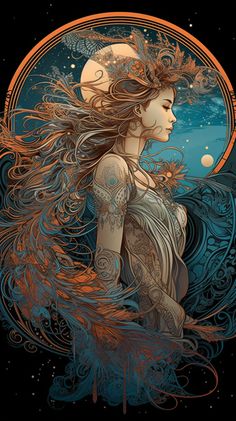
| Author Note: | Rules in author notes |
your trembling fingers
travel across space and time
searching for my touch—
as we are entangled
with sweet dreams and stardust
Hold on,
I will guide you across the sky
amidst crisp cool breeze —
from the deep dark night
to our warm and cozy home
outside
the aquamarine sea
reflects my sequin stars gown—
I’m waiting for you to dip in
where Venus is the star of the show
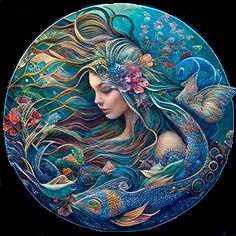
| Author Notes |
Venus Rising was born on the Spring Equinox, March 21, 1996. Is an archetype of Goddess Venus. Represents Higher Love and Wisdom. information about Venus Rising * story about rising venus
Lore = the body of knowledge, especially of a traditional or popular nature, on a particular subject Astrology = the study that interprets the influence of the heavenly bodies on human affairs. Is astrology a science? People are divided on the answer, personally, I believe it is. Tanka is a Japanese unrhymed poem having about 12 to 31 syllables usually arranged in five lines and read in about two breaths in length when read aloud. The first poets who wrote tanka imitated the Japanese models of a 5-7-5-7-7 syllabic structure in five lines. This resulted in poems that were too long in comparison to Japanese tanka. The first tanka were padded or chopped to meet the fixed number of syllables. Additionally, the third line must transition from the descriptive and image-focused beginning lines into a reflective metaphor, simile, or personification for the closing lines. The subject matter varies, but most tanka are emotionally stirring or profound, and many are about love. click here if you want to read modern tanka examples === click here to read Tanka Society of America === click here if you want to read modern tanka rules Thank you very much for your time and kind review. Gypsy "The poet waits quietly to paint the unsaid." --Atticus pictures from pinterest |
![]()
By Gypsy Blue Rose

| Author Note: | For Rules, Please Read My Author Notes |
sunset goddess
yearns to meet her sunrise god—
but they are destined
to live opposite lives
tangled in wanderlust
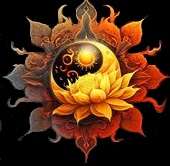
| Author Notes |
Tanka is a Japanese unrhymed poem having about 12 to 31 syllables usually arranged in five lines and read in about two breaths in length when read aloud. The first poets who wrote tanka imitated the Japanese models of a 5-7-5-7-7 syllabic structure in five lines. This resulted in poems that were too long in comparison to Japanese tanka. The first tanka were padded or chopped to meet the fixed number of syllables. Additionally, the third line must transition from the descriptive and image-focused beginning lines into a reflective metaphor, simile, or personification for the closing lines. The subject matter varies, but most tanka are emotionally stirring or profound, and many are about love. click here if you want to read modern tanka examples === click here to read Tanka Society of America === click here if you want to read modern tanka rules
Thank you very much for your time and kind review. Gypsy "The poet waits quietly to paint the unsaid." --Atticus pictures from pinterest |
![]()
By Gypsy Blue Rose

| Author Note: | For Rules, Please Read My Author Notes |
walking alone
at sunset on the seashore —
feet flicking the sand
and the heaviness of being
balanced on the horizon
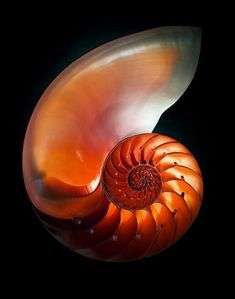
| Author Notes |
"Sometimes with much on the mind and heart, there is a "heaviness of being" but there should be a balance and the walking toward the horizon keeps us going." - Helen (Lyenochka)
4/7/5/7/7 syllable count Tanka is a Japanese unrhymed poem having about 12 to 31 syllables usually arranged in five lines and read in about two breaths in length when read aloud. The first poets who wrote tanka imitated the Japanese models of a 5-7-5-7-7 syllabic structure in five lines. This resulted in poems that were too long in comparison to Japanese tanka. The first tanka were padded or chopped to meet the fixed number of syllables. Additionally, the third line must transition from the descriptive and image-focused beginning lines into a reflective metaphor, simile, or personification for the closing lines. The subject matter varies, but most tanka are emotionally stirring or profound, and many are about love. click here if you want to read modern tanka examples === click here to read Tanka Society of America === click here if you want to read modern tanka rules Thank you very much for your time and kind review. Gypsy "The poet waits quietly to paint the unsaid." --Atticus pictures from pinterest |
![]()
By Gypsy Blue Rose

| Author Note: | For Rules, Please Read My Author Notes |
tangled in passion’s wings
she takes flight in southern wind
traveling East
to lands of dragons’ lore
where she writes poems of fiery love
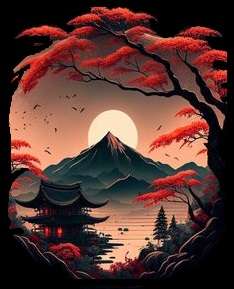
| Author Notes |
6/7/4/6/8 syllables
Tanka is a Japanese unrhymed poem having about 12 to 31 syllables usually arranged in five lines and read in about two breaths in length when read aloud. The first poets who wrote tanka imitated the Japanese models of a 5-7-5-7-7 syllabic structure in five lines. This resulted in poems that were too long in comparison to Japanese tanka. The first tanka were padded or chopped to meet the fixed number of syllables. Additionally, the third line must transition from the descriptive and image-focused beginning lines into a reflective metaphor, simile, or personification for the closing lines. The subject matter varies, but most tanka are emotionally stirring or profound, and many are about love. click here if you want to read modern tanka examples === click here to read Tanka Society of America === click here if you want to read modern tanka rules Thank you very much for your time and kind review. Gypsy "The poet waits quietly to paint the unsaid." --Atticus pictures from pinterest |
![]()
By Gypsy Blue Rose

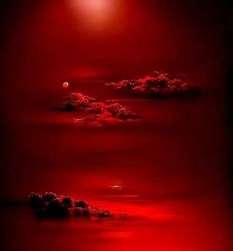
| Author Notes |
"Ever has it been that love knows not its own depth until the hour of separation." - Kahlil Gibran
crimson dawn is breaking and the lazy sun is waking shining on you as you get up in paradise we share the same sky I bask in midday sun tangled in last night√?????√????√???√??√?¬¢??s dreams and lingering earthy musk of Mother Nature√?????√????√???√??√?¬¢??s bouquet amidst all creatures close and far Gogyohka is a five-line free-style Japanese poetic form with no strict rules on syllable count but as brief as possible. Any theme. Lines are grammatically connected. Alliteration, personification, and metaphor are okay but never rhyme. Japanese poets have written gogyohka since the 1910s. However, they did not name the form until 1983 by poet Enta Kusakabe. === source = writers digest ===source=wikipedia Thank you for taking the time to read and review my poem. Gypsy pictures from pinterest |
![]()
By Gypsy Blue Rose
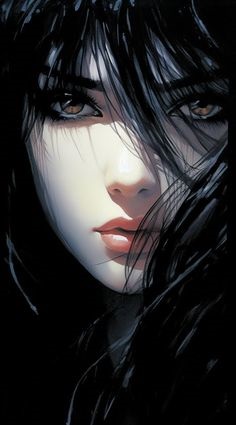
| Author Note: | poem rules and black font in my author notes |
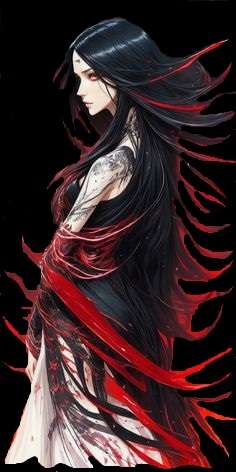
| Author Notes |
memories
of our love-making nights tangled with my long black hair tight to the shadows you left behind Inspired by Tanka Poet, Yosano Akiko book--Tangled Hair 3/6/3/5/9 syllables Tanka is a Japanese unrhymed poem having about 12 to 31 syllables usually arranged in five lines and read in about two breaths in length when read aloud. The first poets who wrote tanka imitated the Japanese models of a 5-7-5-7-7 syllabic structure in five lines. This resulted in poems that were too long in comparison to Japanese tanka. The first tanka were padded or chopped to meet the fixed number of syllables. Additionally, the third line must transition from the descriptive and image-focused beginning lines into a reflective metaphor, simile, or personification for the closing lines. The subject matter varies, but most tanka are emotionally stirring or profound, and many are about love. click here if you want to read modern tanka examples === click here to read Tanka Society of America === click here if you want to read modern tanka rules Thank you very much for your time and kind review. Gypsy "The poet waits quietly to paint the unsaid." --Atticus pictures from pinterest |
![]()
By Gypsy Blue Rose

| Author Note: | poem in black font in my author notes |


| Author Notes |
"Venus yields to caresses, with irresistible effect." ~ Publilius Syrus.
POEM IN BLACK FONT caressing curbs and moist rifts by the mauve light silence sings the unsaid between two old friends yearning through the night you'll find love where flirtatious Venus and Earth share the sky Tanka is a Japanese unrhymed poem having about 12 to 31 syllables usually arranged in five lines and read in about two breaths in length when read aloud. The first poets who wrote tanka imitated the Japanese models of a 5-7-5-7-7 syllabic structure in five lines. This resulted in poems that were too long in comparison to Japanese tanka. The first tanka were padded or chopped to meet the fixed number of syllables. Additionally, the third line must transition from the descriptive and image-focused beginning lines into a reflective metaphor, simile, or personification for the closing lines. The subject matter varies, but most tanka are emotionally stirring or profound, and many are about love. click here if you want to read modern tanka examples === click here to read Tanka Society of America === click here if you want to read modern tanka rules ======================================================= HAIKU is a Japanese short unrhymed poem that uses imagistic language to express the essence of a deeply felt moment in time. It resonates on a deeper level, leaving the reader enlightened and making an insightful connection between the top two lines and the last one, called the SATORI. It originated in the thirteenth century and was mastered a century later by Matsuo Basho. HAIKU uses a dash to pause before the SATORI.. Haiku is about nature and it alludes to a season of the year. The haiku is written from an observer's point of view. In Japan, haiku is written in 17 syllables and three lines ( 5/7/5) but in English is 17 syllables OR LESS because English syllables are longer than Japanese syllables. Avoid capitalization (except proper names) and punctuation. Avoid metaphor and personification, you write about what you can SEE. === click here to read Haiku Society of America, HAIKU EXAMPLES === click here to read Haiku Society of America HAIKU RULES === click here to read why is 5/7/5 OR LESS rule Thank you very much for taking the time to read and review my poem. Gypsy "Poetry heals the wounds inflicted by reason." - Novalis pictures from pinterest |
![]()
By Gypsy Blue Rose

| Author Note: | For Rules, Please Read My Author Notes |
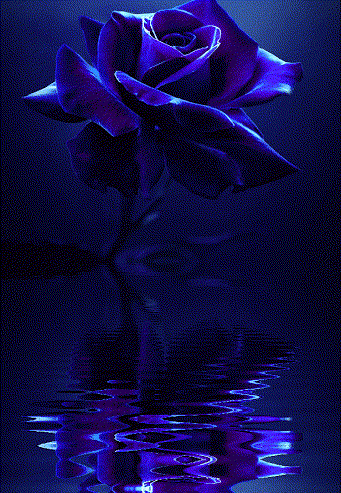
| Author Notes |
Modern Tanka is a Japanese unrhymed poem having about 12 to 31 syllables usually arranged in five lines and read in about two breaths in length when read aloud. The first poets who wrote tanka imitated the Japanese models of a 5-7-5-7-7 syllabic structure in five lines. This resulted in poems that were too long in comparison to Japanese tanka. The first tanka were padded or chopped to meet the fixed number of syllables. Additionally, the third line must transition from the descriptive and image-focused beginning lines into a reflective metaphor, simile, or personification for the closing lines. The subject matter varies, but most tanka are emotionally stirring or profound, and many are about love. click here if you want to read modern tanka examples === click here to read Tanka Society of America === click here if you want to read modern tanka rules
Thank you very much for your time and kind review. Gypsy "The poet waits quietly to paint the unsaid." --Atticus |
![]()
By Gypsy Blue Rose
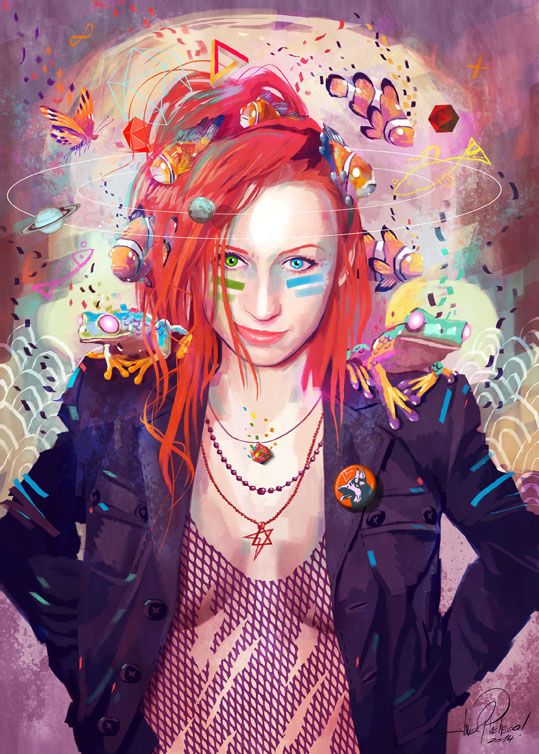
| Author Note: | For Rules, Please Read My Author Notes |
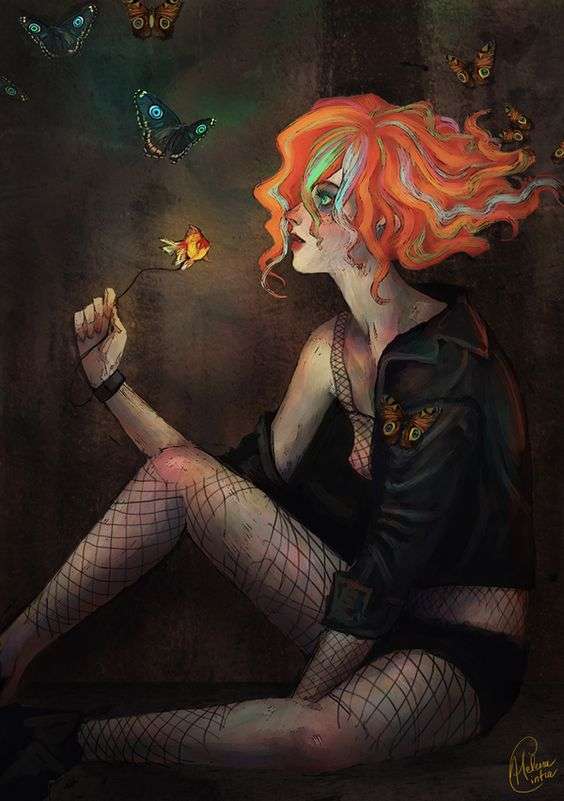
| Author Notes |
- An account of what is like to have a manic episode
- Delirium is a charter inthe Sandman comic book, DC Comics, written by Neil Gaiman - National suicide prevention hotline. 1-800-273-TALK - Suicide crisis line. 988 - What used to be called "Manic Depression" is now called 'Bipolar disorder' and is a mental health condition defined by periods (or episodes) of extreme high and low moods that affect thoughts and behavior. With the right medication, people with bipolar can live normal lives. Estimates suggest that around 4.4% of U.S. adults will have bipolar disorder at some point in their lives. Monopoly cash is used to play a game. People with manic episodes use money as if it is worthless paper. One Flew Over the Cuckoo's Nest is a 1975 American psychological drama film[directed by Milos Forman, based on the 1962 novel of the same name by Ken Kesey. The film stars Jack Nicholson who plays a new patient at a mental institution click here for more information The 100 Dollar Store = is inspired by the One Dollar Store, a thrifty store where everything is a dollar or less. During my manic episodes, I would spend 100 dollars at a time. Tanka is a Japanese unrhymed poem having about 12 to 31 syllables usually arranged in five lines and read in about two breaths in length when read aloud. The first poets who wrote tanka imitated the Japanese models of a 5-7-5-7-7 syllabic structure in five lines. This resulted in poems that were too long in comparison to Japanese tanka. The first tanka were padded or chopped to meet the fixed number of syllables. Additionally, the third line must transition from the descriptive and image-focused beginning lines into a reflective metaphor, simile, or personification for the closing lines. The subject matter varies, but most tanka are emotionally stirring or profound, and many are about love. click here if you want to read modern tanka examples === click here to read Tanka Society of America === click here if you want to read modern tanka rules Thank you very much for your time and kind review. Gypsy "The poet waits quietly to paint the unsaid." --Atticus |
![]()
By Gypsy Blue Rose


| Author Notes |
Gogyohka is a five-line free-style Japanese poetic form with no strict rules on syllable count but as brief as possible. Any theme. Lines are grammatically connected. Alliteration, personification, and metaphor are okay but never rhyme. Japanese poets have written gogyohka since the 1910s. However, they did not name the form until 1983 by poet Enta Kusakabe. === source = writers digest ===source=wikipedia
Thank you for taking the time to read and review my poem. Gypsy |
![]()
By Gypsy Blue Rose

| Author Note: | For Rules, Please Read My Author Notes |
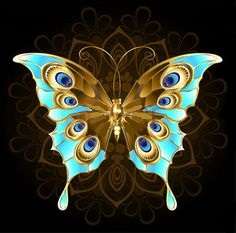
| Author Notes |
A TANKA inspired by MADAME BUTTERFLY, an opera by Giacomo Puccini from
1904. PLOT: An American naval officer, Lieutenant Benjamin Pinkerton, arrives in Japan to work on a ship docked in Nagasaki. To make a better impression, he takes a Japanese wife and house for the duration of his stay there. His young bride, Cho-Cho-San, is a geisha. After a few weeks, Pinkerton leaves Japan and his young wife after he gets the job. In his absence, she gives birth to a son whom she names Trouble. As time goes by, Cho-Cho-San is still convinced that Pinkerton will return to her someday. A week later, she sees a passenger steamer in the harbor. On the deck is Pinkerton with a young blonde woman who turns out to be his new American wife. Pinkerton and his new wife intend to take Cho-Cho-San's son to America. In despair, Cho-Cho-San rushes home. She bids farewell to the baby boy and his nurse and shuts herself in her room to commit suicide with her father's sword. After the first thrust of the sword, she hesitates. Although she is bleeding the wound is not fatal. As she raises the sword again, her baby starts to cry and she changes her mind. She takes the baby and leaves her home. When Mr. Pinkerton called the next day, the little house was quite empty. to read the complete story click here Tanka is a Japanese unrhymed poem having about 12 to 31 syllables usually arranged in five lines and read in about two breaths in length when read aloud. The first poets who wrote tanka imitated the Japanese models of a 5-7-5-7-7 syllabic structure in five lines. This resulted in poems that were too long in comparison to Japanese tanka. The first tanka were padded or chopped to meet the fixed number of syllables. Additionally, the third line must transition from the descriptive and image-focused beginning lines into a reflective metaphor, simile, or personification for the closing lines. The subject matter varies, but most tanka are emotionally stirring or profound, and many are about love. click here if you want to read modern tanka examples === click here to read Tanka Society of America === click here if you want to read modern tanka rules Thank you very much for your time and kind review. Gypsy "The poet waits quietly to paint the unsaid." --Atticus pictures from pinterest |
![]()
By Gypsy Blue Rose

| Author Note: | For Rules, Please Read My Author Notes |

| Author Notes |
Tanka is a Japanese unrhymed poem having about 12 to 31 syllables usually arranged in five lines and read in about two breaths in length when read aloud. The first poets who wrote tanka imitated the Japanese models of a 5-7-5-7-7 syllabic structure in five lines. This resulted in poems that were too long in comparison to Japanese tanka. The first tanka were padded or chopped to meet the fixed number of syllables. Additionally, the third line must transition from the descriptive and image-focused beginning lines into a reflective metaphor, simile, or personification for the closing lines. The subject matter varies, but most tanka are emotionally stirring or profound, and many are about love. click here if you want to read modern tanka examples === click here to read Tanka Society of America === click here if you want to read modern tanka rules
Thank you very much for your time and kind review. Gypsy "The poet waits quietly to paint the unsaid." --Atticus pictures from pinterest |
![]()
By Gypsy Blue Rose

| Author Note: | Dedicated to Pedro, my first love |

| Author Notes |
Dedicated to Pedro, my first love.
Title - The First Cut is the Deepest is a song by Cat Stevens Tanka is a Japanese unrhymed poem having about 12 to 31 syllables usually arranged in five lines and read in about two breaths in length when read aloud. The first poets who wrote tanka imitated the Japanese models of a 5-7-5-7-7 syllabic structure in five lines. This resulted in poems that were too long in comparison to Japanese tanka. The first tanka were padded or chopped to meet the fixed number of syllables. Additionally, the third line must transition from the descriptive and image-focused beginning lines into a reflective metaphor, simile, or personification for the closing lines. The subject matter varies, but most tanka are emotionally stirring or profound, and many are about love. click here if you want to read modern tanka examples === click here to read Tanka Society of America === click here if you want to read modern tanka rules Thank you very much for taking the time to read and review my poem. Gypsy "Poetry heals the wounds inflicted by reason." - Novalis pictures from pinterest |
![]()
By Gypsy Blue Rose

| Author Note: | For Rules, Please Read My Author Notes |

| Author Notes |
King Salman of Saudi Arabia Since 2015. I used King Salman for poetic purposes, I don't approve of his government and laws against women.
the bottom picture is a desert rose made of sand Tanka is a Japanese unrhymed poem having about 12 to 31 syllables usually arranged in five lines and read in about two breaths in length when read aloud. The first poets who wrote tanka imitated the Japanese models of a 5-7-5-7-7 syllabic structure in five lines. This resulted in poems that were too long in comparison to Japanese tanka. The first tanka were padded or chopped to meet the fixed number of syllables. Additionally, the third line must transition from the descriptive and image-focused beginning lines into a reflective metaphor, simile, or personification for the closing lines. The subject matter varies, but most tanka are emotionally stirring or profound, and many are about love. click here if you want to read modern tanka examples === click here to read Tanka Society of America === click here if you want to read modern tanka rules Thank you very much for your time and kind review. Gypsy "The poet waits quietly to paint the unsaid." --Atticus picture from pinterest |
![]()
By Gypsy Blue Rose
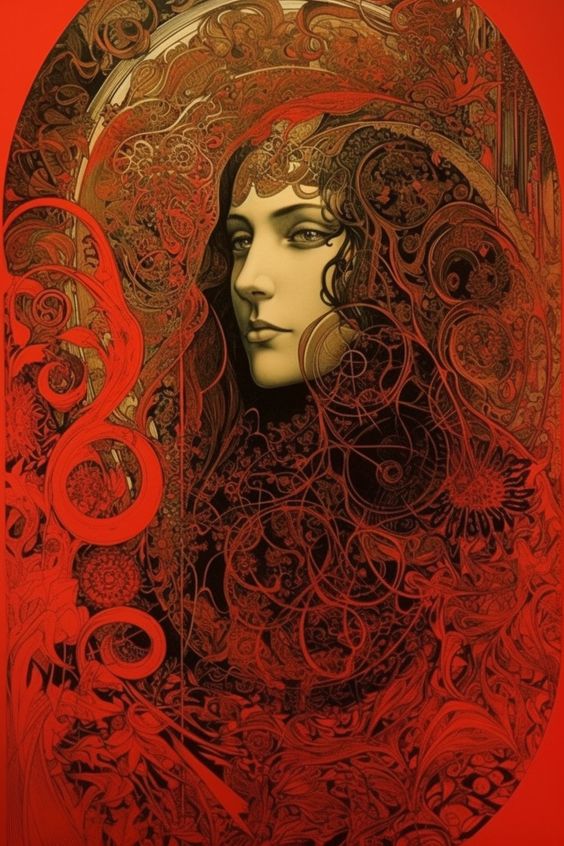
| Author Note: | poem in black font in my author notes |
the day is dying
and dusk is 'round the bend
but don’t be weary, my love,
I’ll be with you till the end
rest deeply in my embrace

| Author Notes |
the day is dying
and dusk is 'round the bend but don‚??t be weary, my love, I‚??ll be with you till the end rest deeply in my embrace Gogyohka is a five-line free-style Japanese poetic form with no strict rules on syllable count but as brief as possible. Any theme. Lines are grammatically connected. Alliteration, personification, and metaphor are okay but never rhyme. Japanese poets have written gogyohka since the 1910s. However, they did not name the form until 1983 by poet Enta Kusakabe. === source = writers digest ===source=wikipedia Thank you for taking the time to read and review my poem. Gypsy "Ever has it been that love knows not its own depth until the hour of separation." - Kahlil Gibran pictures from pinterest |
![]()
By Gypsy Blue Rose

| Author Note: | for a friend |
the Mother's gifts
Do you feel my caress
tangled with southern winds?
Playful breeze offers
crimson and golden leaves
to place them neath your feet.

| Author Notes |
Tanka is a Japanese unrhymed poem having about 12 to 31 syllables usually arranged in five lines and read in about two breaths in length when read aloud. The first poets who wrote tanka imitated the Japanese models of a 5-7-5-7-7 syllabic structure in five lines. This resulted in poems that were too long in comparison to Japanese tanka. The first tanka were padded or chopped to meet the fixed number of syllables. Additionally, the third line must transition from the descriptive and image-focused beginning lines into a reflective metaphor, simile, or personification for the closing lines. The subject matter varies, but most tanka are emotionally stirring or profound, and many are about love. click here if you want to read modern tanka examples === click here to read Tanka Society of America === click here if you want to read modern tanka rules
Thank you very much for your time and kind review. Gypsy "The poet waits quietly to paint the unsaid." --Atticus |
![]()
By Gypsy Blue Rose
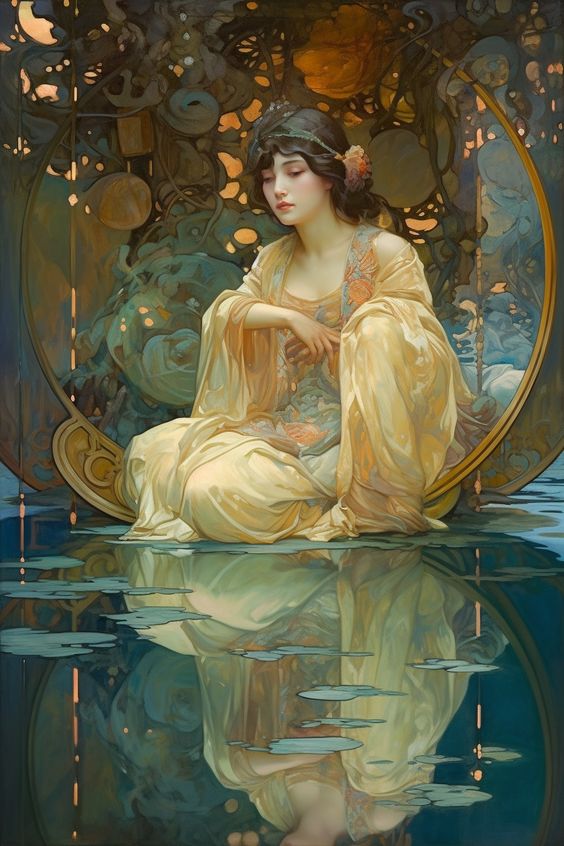
| Author Note: | for Robert |

| Author Notes |
Tanka is a Japanese unrhymed poem having about 12 to 31 syllables usually arranged in five lines and read in about two breaths in length when read aloud. The first poets who wrote tanka imitated the Japanese models of a 5-7-5-7-7 syllabic structure in five lines. This resulted in poems that were too long in comparison to Japanese tanka. The first tanka were padded or chopped to meet the fixed number of syllables. Additionally, the third line must transition from the descriptive and image-focused beginning lines into a reflective metaphor, simile, or personification for the closing lines. The subject matter varies, but most tanka are emotionally stirring or profound, and many are about love. click here if you want to read modern tanka examples === click here to read Tanka Society of America === click here if you want to read modern tanka rules
Thank you very much for your time and kind review. Gypsy "The poet waits quietly to paint the unsaid." --Atticus picture from pinterest |
![]()
By Gypsy Blue Rose

droplets of dew
on pearly skin and onyx hair
she has an alluring gaze
enticing to touch
intimate clefts and curves
a night of passion
tangled in satin scarves and sheets
between oakwood bedposts
tied to mutual surrender
where love’s veil flows free

| Author Notes |
Tanka is a Japanese unrhymed poem having about 12 to 31 syllables usually arranged in five lines and read in about two breaths in length when read aloud. The first poets who wrote tanka imitated the Japanese models of a 5-7-5-7-7 syllabic structure in five lines. This resulted in poems that were too long in comparison to Japanese tanka. The first tanka were padded or chopped to meet the fixed number of syllables. Additionally, the third line must transition from the descriptive and image-focused beginning lines into a reflective metaphor, simile, or personification for the closing lines. The subject matter varies, but most tanka are emotionally stirring or profound, and many are about love. click here if you want to read modern tanka examples === click here to read Tanka Society of America === click here if you want to read modern tanka rules
Thank you very much for your time and kind review. Gypsy "The poet waits quietly to paint the unsaid." --Atticus |
![]()
By Gypsy Blue Rose
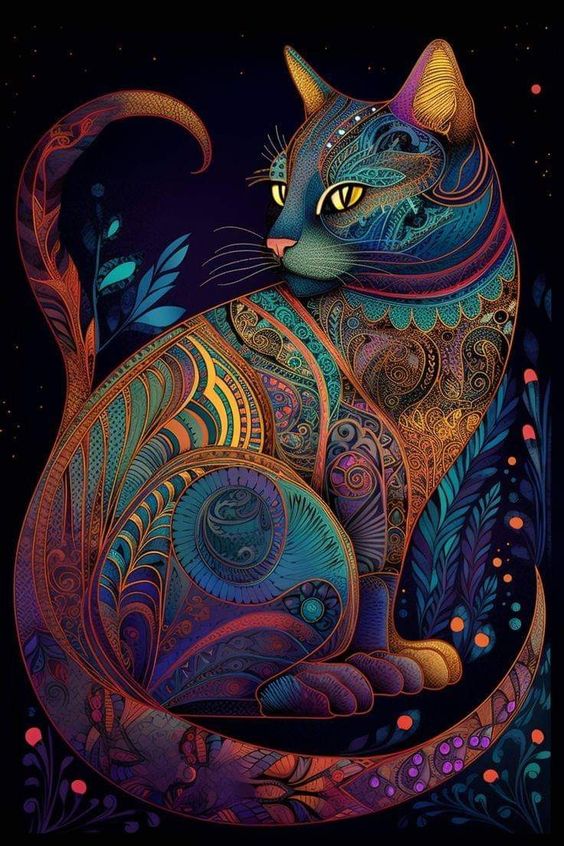
| Author Note: | For Rules, Please Read My Author Notes |
sultry sleepless night,
your touch still fresh on my mind—
outside my window
a cat in heat meows
hungry for love and tuna
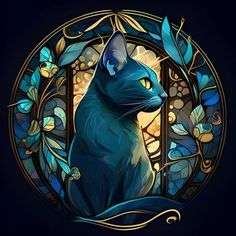
| Author Notes |
Tanka is a Japanese unrhymed poem having about 12 to 31 syllables usually arranged in five lines and read in about two breaths in length when read aloud. The first poets who wrote tanka imitated the Japanese models of a 5-7-5-7-7 syllabic structure in five lines. This resulted in poems that were too long in comparison to Japanese tanka. The first tanka were padded or chopped to meet the fixed number of syllables. Additionally, the third line must transition from the descriptive and image-focused beginning lines into a reflective metaphor, simile, or personification for the closing lines. The subject matter varies, but most tanka are emotionally stirring or profound, and many are about love. click here if you want to read modern tanka examples === click here to read Tanka Society of America === click here if you want to read modern tanka rules
Thank you very much for your time and kind review. Gypsy "The poet waits quietly to paint the unsaid." --Atticus pictures from pinterest |
![]()
By Gypsy Blue Rose

| Author Note: | For Rules, Please Read My Author Notes |
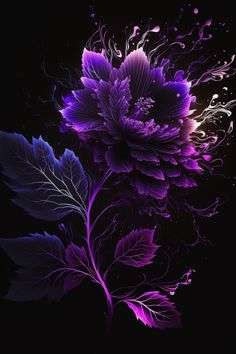
| Author Notes |
4/7/6/8/6 syllables
Ekphrastic means a poem inspired by a picture or painting Tanka is a Japanese unrhymed poem having about 12 to 31 syllables usually arranged in five lines and read in about two breaths in length when read aloud. The first poets who wrote tanka imitated the Japanese models of a 5-7-5-7-7 syllabic structure in five lines. This resulted in poems that were too long in comparison to Japanese tanka. The first tanka were padded or chopped to meet the fixed number of syllables. Additionally, the third line must transition from the descriptive and image-focused beginning lines into a reflective metaphor, simile, or personification for the closing lines. The subject matter varies, but most tanka are emotionally stirring or profound, and many are about love. click here if you want to read modern tanka examples === click here to read Tanka Society of America === click here if you want to read modern tanka rules Thank you very much for your time and kind review. Gypsy "The poet waits quietly to paint the unsaid." --Atticus |
![]()
By Gypsy Blue Rose
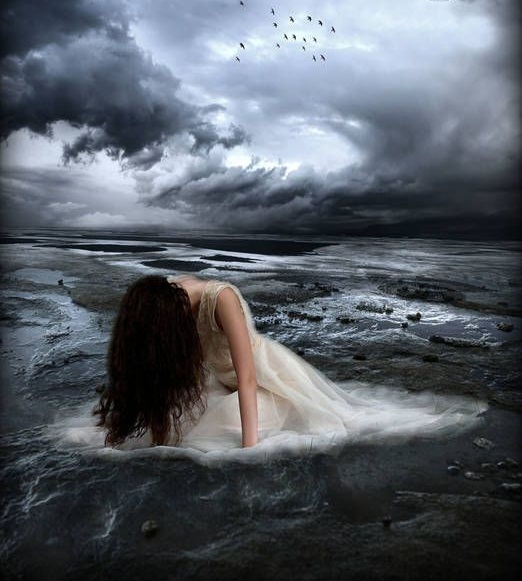
| Author Note: | For Rules, Please Read My Author Notes |

| Author Notes |
ascend= move upwards
descend= move downwards omnipresent= God is present everywhere at the same time Tanka is a Japanese unrhymed poem having about 12 to 31 syllables usually arranged in five lines and read in about two breaths in length when read aloud. The first poets who wrote tanka imitated the Japanese models of a 5-7-5-7-7 syllabic structure in five lines. This resulted in poems that were too long in comparison to Japanese tanka. The first tanka were padded or chopped to meet the fixed number of syllables. Additionally, the third line must transition from the descriptive and image-focused beginning lines into a reflective metaphor, simile, or personification for the closing lines. The subject matter varies, but most tanka are emotionally stirring or profound, and many are about love. click here if you want to read modern tanka examples === click here to read Tanka Society of America === click here if you want to read modern tanka rules Thank you very much for your time and kind review. Gypsy "The poet waits quietly to paint the unsaid." --Atticus picture from pinterest |
![]()
By Gypsy Blue Rose


| Author Notes |
Gogyohka is a five-line free-style Japanese poetic form with no strict rules on syllable count but as brief as possible. Any theme. Lines are grammatically connected. Alliteration, personification, and metaphor are okay but never rhyme. Japanese poets have written gogyohka since the 1910s. However, they did not name the form until 1983 by poet Enta Kusakabe. === source = writers digest ===source=wikipedia
Thank you for taking the time to read and review my poem. Gypsy "Ever has it been that love knows not its own depth until the hour of separation." ~ Kahlil Gibran |
![]()
By Gypsy Blue Rose

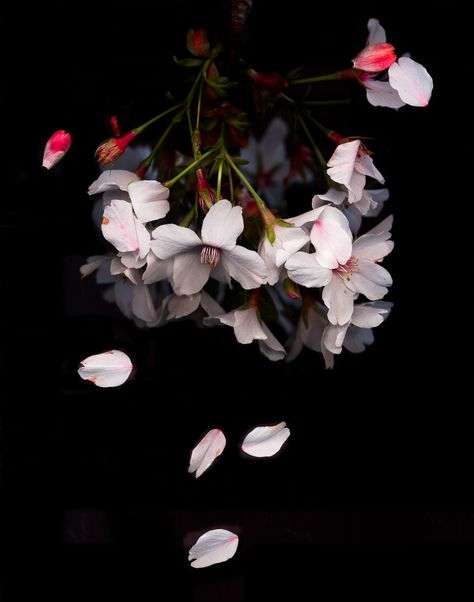
| Author Notes |
Gogyohka is a five-line poem similar to Tanka but with an unlimited syllable count, though you should keep it as succinct as possible.
Gogyohka is a five-line free-style Japanese poetic form with no strict rules on syllable count but as brief as possible. Any theme. Lines are grammatically connected. Alliteration, personification, and metaphor are okay but never rhyme. Japanese poets have written gogyohka since the 1910s. However, they did not name the form until 1983 by poet Enta Kusakabe. === source = writers digest ===source=wikipedia Thank you for taking the time to read and review my poem. Gypsy picture from pinterest |
![]()
By Gypsy Blue Rose
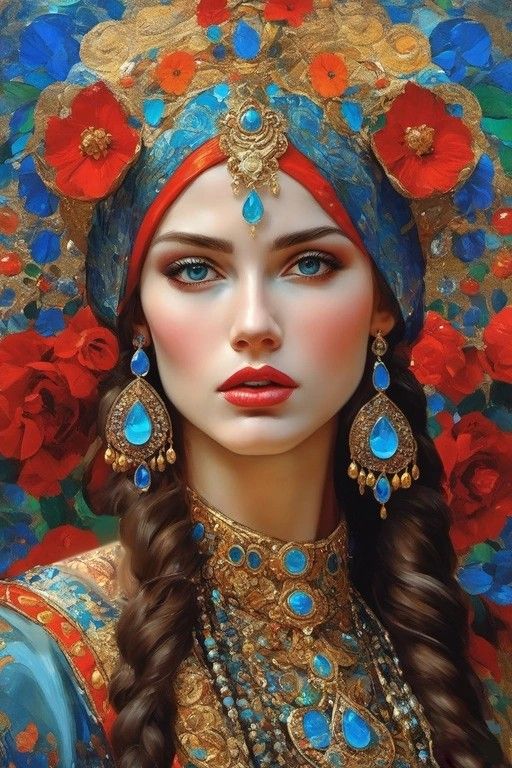
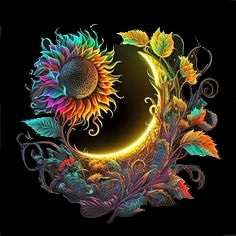
| Author Notes |
Tanka is a Japanese unrhymed poem having about 12 to 31 syllables usually arranged in five lines and read in about two breaths in length when read aloud. The first poets who wrote tanka imitated the Japanese models of a 5-7-5-7-7 syllabic structure in five lines. This resulted in poems that were too long in comparison to Japanese tanka. The first tanka were padded or chopped to meet the fixed number of syllables. Additionally, the third line must transition from the descriptive and image-focused beginning lines into a reflective metaphor, simile, or personification for the closing lines. The subject matter varies, but most tanka are emotionally stirring or profound, and many are about love. click here if you want to read modern tanka examples === click here to read Tanka Society of America === click here if you want to read modern tanka rules
Thank you very much for your time and kind review. Gypsy "The poet waits quietly to paint the unsaid." --Atticus |
![]()
By Gypsy Blue Rose

my soul soars
across the universe
searching for your love
seduced by Venus and Jupiter
covered in stardust and dreams of you

| Author Notes |
"Drops of Jupiter" Title is the name of a song by Train. The poem doesn't have anything to do with the song.
Gogyohka is a 5 Lines Poem similar to tanka but with no restriction to syllables count; however it should be as succinct as possible. Thank you very much for taking the time to read and review my poem. Gypsy "The poet waits quietly to paint the unsaid." Atticus |
![]()
By Gypsy Blue Rose

| Author Note: | For Rules, Please Read My Author Notes |
sunset fire
heats the witch’s cauldron
to cook trick-or-treaters
for her Halloween special spell
of youth and mischief
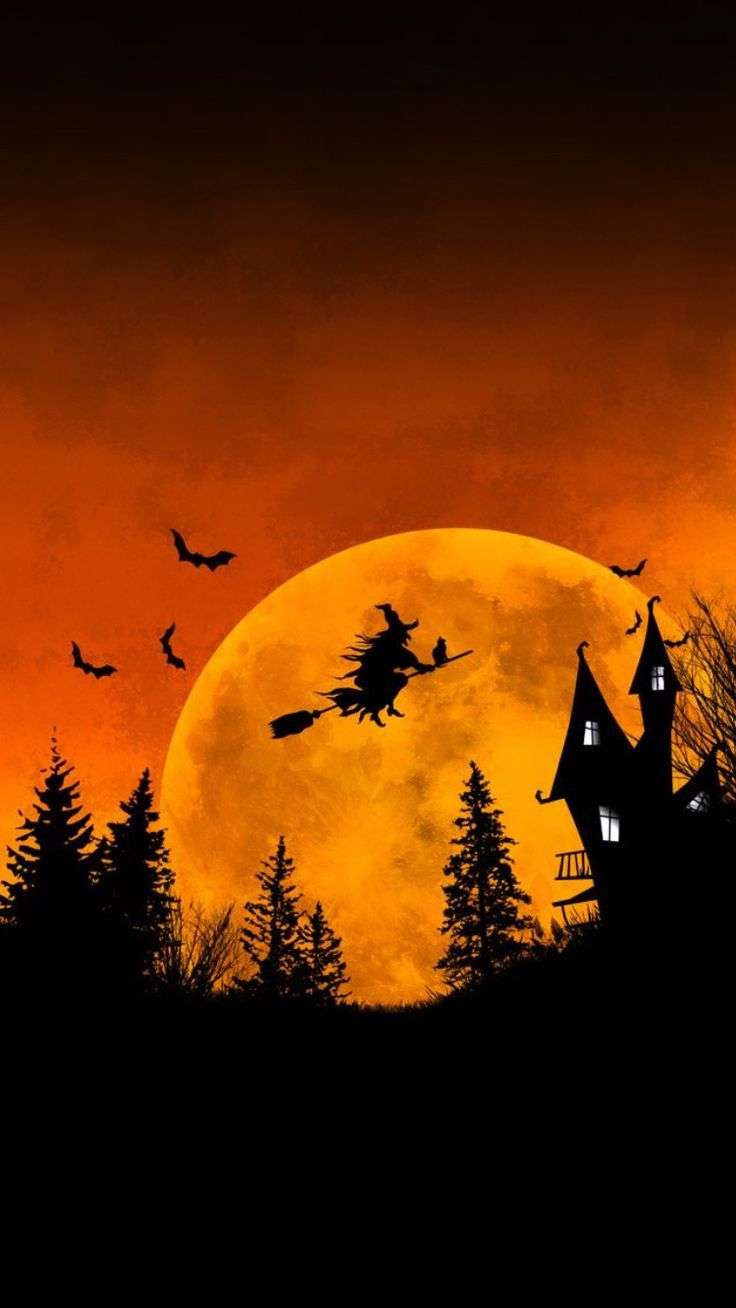
| Author Notes |
Getting into the Halloween Spirit
Tanka is a Japanese unrhymed poem having about 12 to 31 syllables usually arranged in five lines and read in about two breaths in length when read aloud. The first poets who wrote tanka imitated the Japanese models of a 5-7-5-7-7 syllabic structure in five lines. This resulted in poems that were too long in comparison to Japanese tanka. The first tanka were padded or chopped to meet the fixed number of syllables. Additionally, the third line must transition from the descriptive and image-focused beginning lines into a reflective metaphor, simile, or personification for the closing lines. The subject matter varies, but most tanka are emotionally stirring or profound, and many are about love. click here if you want to read modern tanka examples === click here to read Tanka Society of America === click here if you want to read modern tanka rules Thank you very much for your time and kind review. Gypsy "The poet waits quietly to paint the unsaid." --Atticus pictures from pinterest |
![]()
By Gypsy Blue Rose
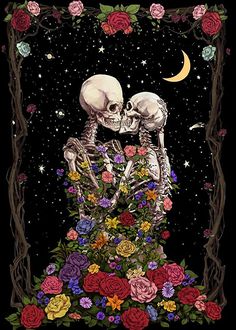
| Author Note: | for the innocent caught in the war crossfire |
innocent lovers die
tangled in broken dreams and loss—
the cruel sun shines
over ruins, rubble, and blood
where orphan children cry
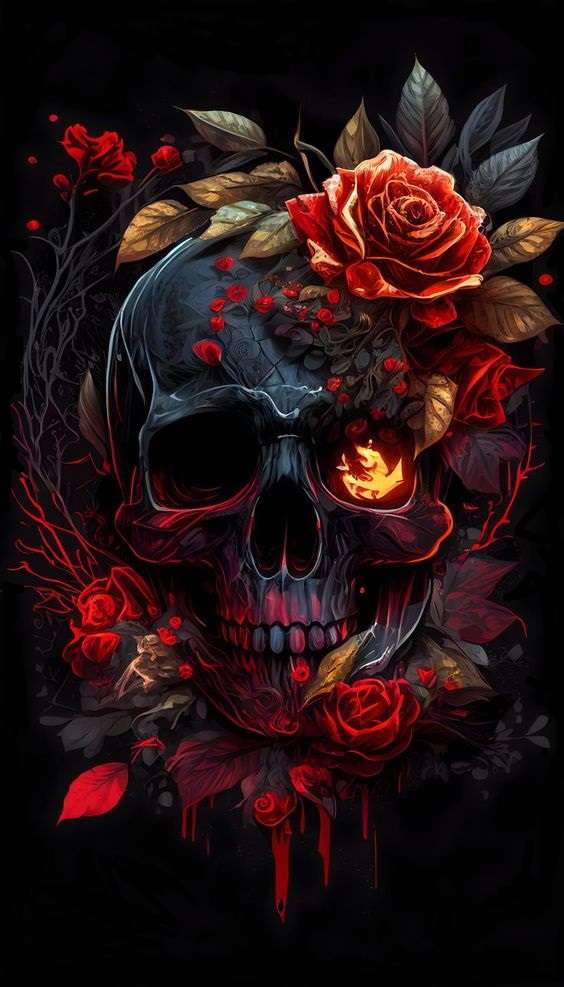
| Author Notes |
This poem is fictional about a couple killed in the war, but it's inspired by true events of the war between a Palestinian militant group called Hamas and Israel. I watched a video of adults and children being pulled out of the hospital ruins and it broke my heart.
BBC NEWS: The Palestinian militant group Hamas launched an unprecedented attack on Israel on 7 October, killing more than 1,400 people and taking more than 200 hostage. Palestinian health officials say more than 4,000 people have been killed in Gaza since Israel launched retaliatory air strikes, and a ground offensive is expected. The UN's agency for Palestinian refugees has warned that time is running out to get aid into the Gaza Strip. UNRWA says access to clean water is severely limited and "concerns over dehydration and waterborne diseases are high". Israel is also blocking supplies of electricity, food and fuel. It said it would not end the "siege" until Hamas released hostages. However, the UN's Secretary-General, Antonio Gutierres, said he expected the Rafah border crossing with Egypt to open in "the next day or so" for lorries carrying aid to get through. Gaza's Hamas-run government said 18 Christian Palestinians were killed in an explosion within the compound of the Saint Porphyrius Church in Gaza City on Thursday night. The BBC has not been able to verify this figure. Israel said its jets were targeting a Hamas launch site for rockets and mortars and that a wall of the church was damaged. Palestinian officials said at least 471 people were killed by an explosion at the Al-Ahli Arab Hospital in Gaza City on 17 October. The Israel Defense Forces (IDF) said this number has been deliberately inflated but has not released its own assessment of how many died. ================================================ Tanka is a Japanese unrhymed poem having about 12 to 31 syllables usually arranged in five lines and read in about two breaths in length when read aloud. The first poets who wrote tanka imitated the Japanese models of a 5-7-5-7-7 syllabic structure in five lines. This resulted in poems that were too long in comparison to Japanese tanka. The first tanka were padded or chopped to meet the fixed number of syllables. Additionally, the third line must transition from the descriptive and image-focused beginning lines into a reflective metaphor, simile, or personification for the closing lines. The subject matter varies, but most tanka are emotionally stirring or profound, and many are about love. click here if you want to read modern tanka examples === click here to read Tanka Society of America === click here if you want to read modern tanka rules Thank you very much for your time and kind review. Gypsy "The poet waits quietly to paint the unsaid." --Atticus pictures from pinterest |
![]()
By Gypsy Blue Rose

| Author Note: | For Rules, Please Read My Author Notes |
did the blue bird tell
I wrote a poem for you today?
I’m tangled in dreams
of us dancing all night
to the beats of our hearts

| Author Notes |
Tanka is a Japanese unrhymed poem having about 12 to 31 syllables usually arranged in five lines and read in about two breaths in length when read aloud. The first poets who wrote tanka imitated the Japanese models of a 5-7-5-7-7 syllabic structure in five lines. This resulted in poems that were too long in comparison to Japanese tanka. The first tanka were padded or chopped to meet the fixed number of syllables. Additionally, the third line must transition from the descriptive and image-focused beginning lines into a reflective metaphor, simile, or personification for the closing lines. The subject matter varies, but most tanka are emotionally stirring or profound, and many are about love. click here if you want to read modern tanka examples === click here to read Tanka Society of America === click here if you want to read modern tanka rules
Thank you very much for your time and kind review. Gypsy "The poet waits quietly to paint the unsaid." --Atticus pictures from pinterest |
![]()
By Gypsy Blue Rose
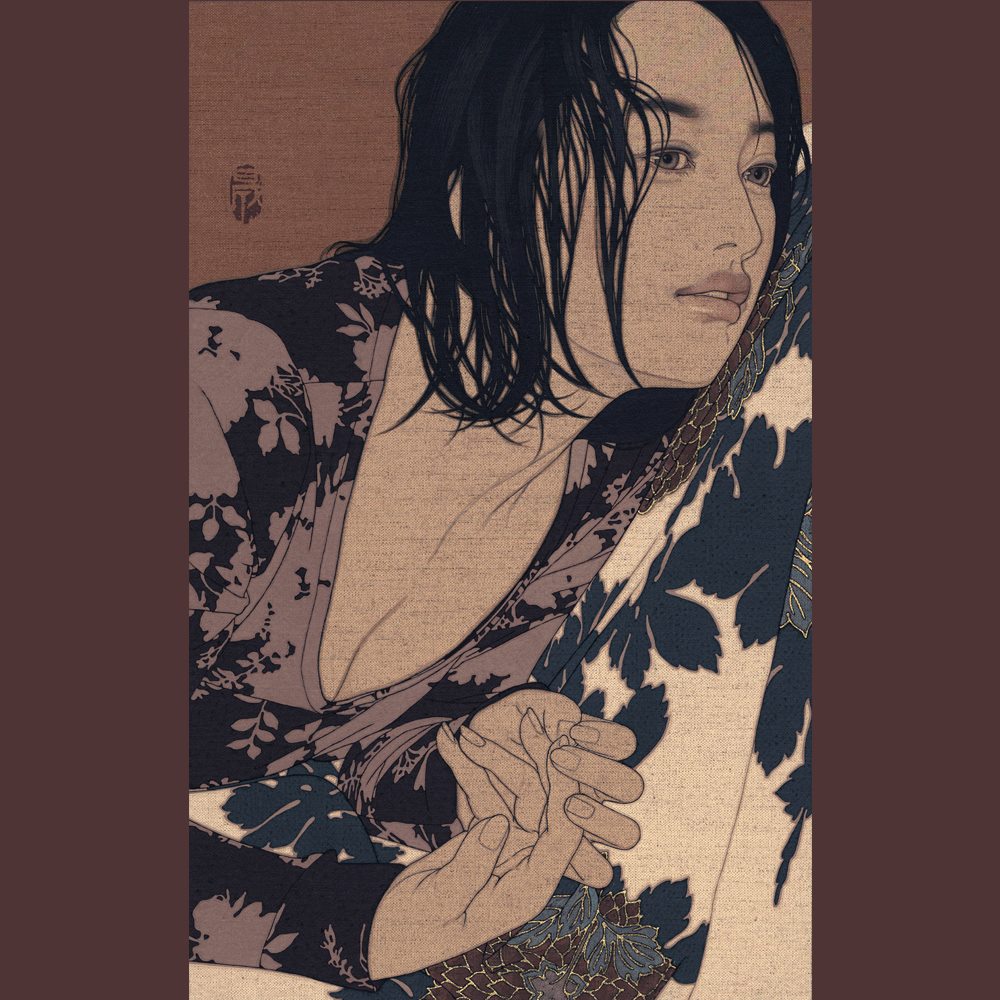
| Author Note: | For Rules, Please Read My Author Notes |
tangled in sheets
I can't sleep until I feel your touch
all over me
in this oppressive heat wave
dripping lust, my bed aflame

| Author Notes |
Tanka is a Japanese unrhymed poem having about 12 to 31 syllables usually arranged in five lines and read in about two breaths in length when read aloud. The first poets who wrote tanka imitated the Japanese models of a 5-7-5-7-7 syllabic structure in five lines. This resulted in poems that were too long in comparison to Japanese tanka. The first tanka were padded or chopped to meet the fixed number of syllables. Additionally, the third line must transition from the descriptive and image-focused beginning lines into a reflective metaphor, simile, or personification for the closing lines. The subject matter varies, but most tanka are emotionally stirring or profound, and many are about love. click here if you want to read modern tanka examples === click here to read Tanka Society of America === click here if you want to read modern tanka rules
Thank you very much for your time and kind review. Gypsy "The poet waits quietly to paint the unsaid." --Atticus painting by Ikenaga Yasunari |
![]()
By Gypsy Blue Rose

| Author Note: | For Rules, Please Read My Author Notes |

| Author Notes |
The "Little Death" or (La petite mort) is an expression that means "a brief loss of consciousness" and in modern usage refers specifically to "the sensation of post orgasm as likened to death."
Tanka is a Japanese unrhymed poem having about 12 to 31 syllables usually arranged in five lines and read in about two breaths in length when read aloud. The first poets who wrote tanka imitated the Japanese models of a 5-7-5-7-7 syllabic structure in five lines. This resulted in poems that were too long in comparison to Japanese tanka. The first tanka were padded or chopped to meet the fixed number of syllables. Additionally, the third line must transition from the descriptive and image-focused beginning lines into a reflective metaphor, simile, or personification for the closing lines. The subject matter varies, but most tanka are emotionally stirring or profound, and many are about love. click here if you want to read modern tanka examples === click here to read Tanka Society of America === click here if you want to read modern tanka rules Thank you very much for your time and kind review. Gypsy "The poet waits quietly to paint the unsaid." --Atticus painting by Ikenaga Yasunari |
![]()
By Gypsy Blue Rose
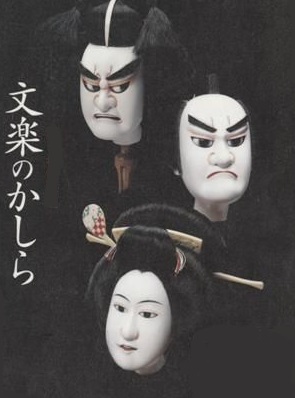
| Author Note: | For Rules, Please Read My Author Notes |
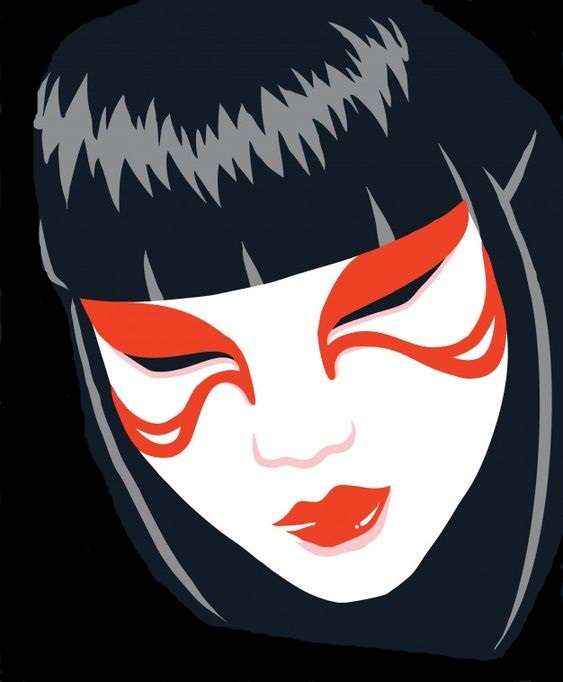
| Author Notes |
Melancholia = sadness; depression; gloomy
In KABUKI (Japanese theater), the KUROKO is a theater running crew. They move scenery and props on stage, aiding in scene and costume changes. Kuroko wears all black clothes, head to toe, in order to imply that they are invisible and not part of the action onstage. Tanka is a Japanese unrhymed poem having about 12 to 31 syllables usually arranged in five lines and read in about two breaths in length when read aloud. The first poets who wrote tanka imitated the Japanese models of a 5-7-5-7-7 syllabic structure in five lines. This resulted in poems that were too long in comparison to Japanese tanka. The first tanka were padded or chopped to meet the fixed number of syllables. Additionally, the third line must transition from the descriptive and image-focused beginning lines into a reflective metaphor, simile, or personification for the closing lines. The subject matter varies, but most tanka are emotionally stirring or profound, and many are about love. click here if you want to read modern tanka examples === click here to read Tanka Society of America === click here if you want to read modern tanka rules Thank you very much for your time and kind review. Gypsy "The poet waits quietly to paint the unsaid." --Atticus pictures from pinterest |
![]()
By Gypsy Blue Rose

c o l d w i n d
meanders through
bare boughs and crispy leaves
playing the forest symphony —
a u t u m n
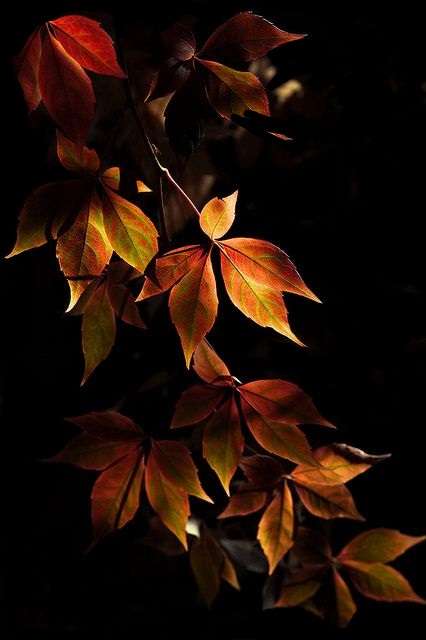
| Author Notes |
CINQUAIN is inspired by Japanese haiku and tanka, is akin in spirit to that of the *Imagists. The form is five lines with 22 syllables count in a pattern of 2/4/6/8/2. The title is used as the sixth line. It"s usually unrhymed but it can be rhymed and about any subject. It was created by American poet, Adelaide Crapsey in 1915. Her cinquain depends on the strict structure and intense imagery to communicate a mood or feeling.
*Imagism was a movement in early-20th-century American poetry that favored precision of imagery and clear, sharp language, very much as haiku and tanka. more information more information about cinquain Thank you very much for reading and reviewing my poem. Gypsy |
![]()
By Gypsy Blue Rose

Since she was a little girl, Sadie loved to dress up and pretend to be someone else. As an adult, she dressed up for her husband sometimes. He called her ‘my Sexy Sadie’. But besides sex games with her husband, she loved looking for the best Halloween Costume. It was the only night of the year she didn’t have to be a responsible teacher and dignified adult.
As Sadie grew older, Halloween was just another day of the year. The only fun thing about it was trick-or-treating with her grandson, Tommy, and her daughter, Ellie.
Tommy was excited from the minute he woke up. He found the candy and had some. The poor kid was running around like a tiny crack addict bouncing off the walls. He wore a Bluey costume and his mom wore a witch dress and pointy hat.
For some reason, Tommy and Ellie were ignoring Sadie. She was trying not to take it personally, after all, he was only six years old and Ellie looked very upset. Her eyes were red and puffy. Maybe she had an argument with her husband. Sadie always stayed out of their arguments.
Everybody was getting ready for trick-or-treating and nobody asked Sadie if she wanted to come along. The previous night, Sadie didn’t sleep well and she was rather tired. She decided to settle in, get some popcorn, and watch her favorite scary movies.
The doorbell rang. “Shit, I forgot about trick-or-treaters.” She opened the door and had to smile at the little princess and the tiny pirate. The weird thing was that they seemed disappointed, turned around, and left without getting candy. “What a hell … okay, more candy for me.”
On her way back to the sofa, she looked at the hallway mirror and gasped in horror. She didn’t see her reflection, just an empty hallway.
| Author Notes |
-Sexy Sadie is a Beattle's song
-Bluey is an Australian animated cartoon about a preschool dog and his family. Thank you very much for taking the time to read and review my story. Gypsy |
![]()
By Gypsy Blue Rose
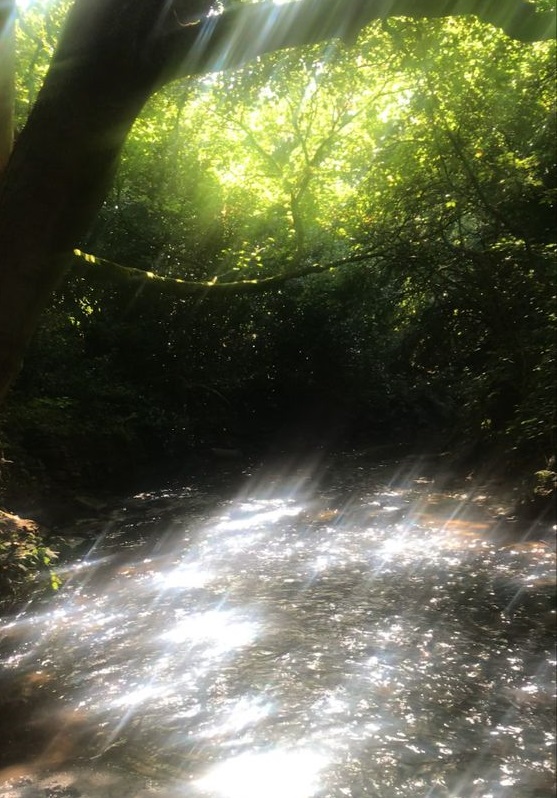
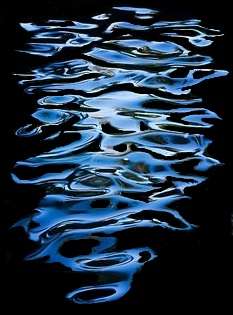
| Author Notes |
Gogyohka is a five-line free-style Japanese poetic form with no strict rules on syllable count but as brief as possible. Any theme. Lines are grammatically connected. Alliteration, personification, and metaphor are okay but never rhyme. Japanese poets have written gogyohka since the 1910s. However, they did not name the form until 1983 by poet Enta Kusakabe. === source = writers digest ===source=wikipedia
Thank you for taking the time to read and review my poem. Gypsy |
![]()
By Gypsy Blue Rose

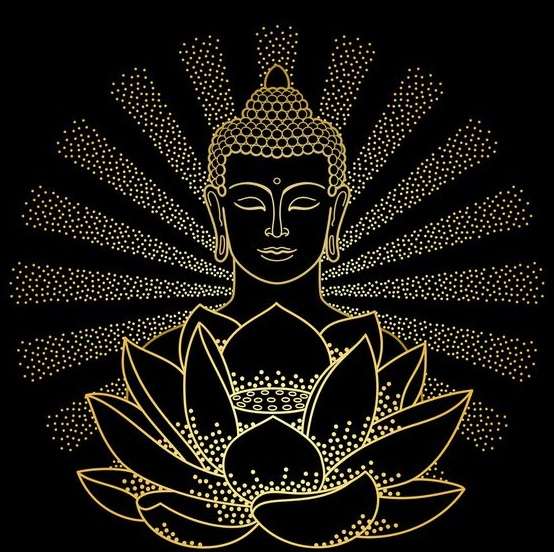
| Author Notes |
The traditional art of writing haiku started with Buddhist monks in Japan and has now spread all over the world. The spiritual art form emphasizes being in the moment, with the shortness of the poem is a reflection of Zen Buddhist philosophy.
"Death is as important as being born because birth and death are interrelated. Without birth, there's no death. Without death, there's no birth. So do not be afraid of death. Death is just a continuation, and so is birth." - Thich Nhat Hanh Thich Nhat Hanh was a Vietnamese Buddhist monk, peace activist, prolific author, poet, and teacher. click here if you want to know more about Thich Nhat Hanh Gogyohka is a five-line free-style Japanese poetic form with no strict rules on syllable count but as brief as possible. Any theme. Lines are grammatically connected. Alliteration, personification, and metaphor are okay but never rhyme. Japanese poets have written gogyohka since the 1910s. However, they did not name the form until 1983 by poet Enta Kusakabe. === source = writers digest ===source=wikipedia Thank you for taking the time to read and review my poem. Gypsy pictures from pinterest |
![]()
By Gypsy Blue Rose
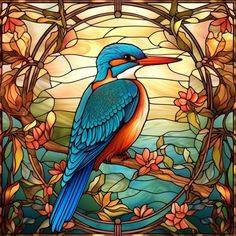

secretary’s day off
cuddled in her warm bed—
outside her window
loud chirping birds
didn’t get the memo
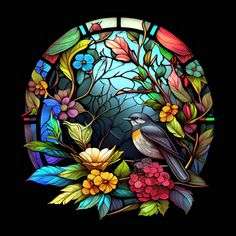
| Author Notes |
Gogyohka is a five-line free-style Japanese poetic form with no strict rules on syllable count but as brief as possible. Any theme. Lines are grammatically connected. Alliteration, personification, and metaphor are okay but never rhyme. Japanese poets have written gogyohka since the 1910s. However, they did not name the form until 1983 by poet Enta Kusakabe. === source = writers digest ===source=wikipedia
Thank you for taking the time to read and review my poem. Gypsy pictures from pinterest |
![]()
By Gypsy Blue Rose

nothing to do
on this lazy summer day —
time balances
on the wings
of a dragonfly
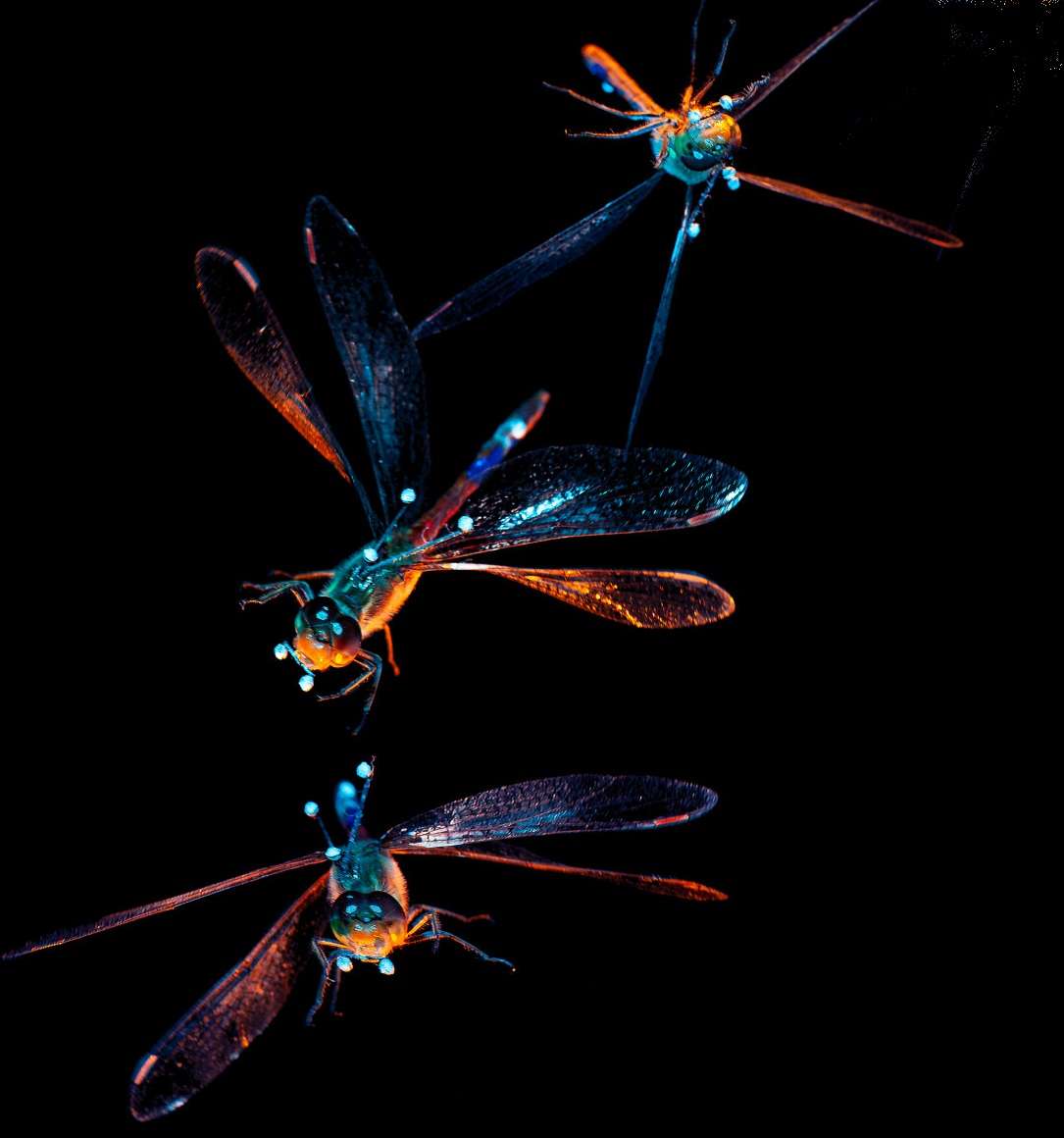
| Author Notes |
"Having flown the earth for 300 million years, dragonflies symbolize the ability to overcome times of hardship they remind us to take time to reconnect with our strength, courage, and happiness" - mysouldiscovery
Gogyohka is a five-line free-style Japanese poetic form with no strict rules on syllable count but as brief as possible. Any theme. Lines are grammatically connected. Alliteration, personification, and metaphor are okay but never rhyme. Japanese poets have written gogyohka since the 1910s. However, they did not name the form until 1983 by poet Enta Kusakabe. === source = writers digest ===source=wikipedia Thank you for taking the time to read and review my poem. Gypsy pictures from pinterest |
![]()
By Gypsy Blue Rose

| Author Note: | For Rules, Please Read My Author Notes |

| Author Notes |
written in lowercase without punctuation
Modern Tanka is a Japanese unrhymed poem having about 12 to 31 syllables usually arranged in five lines and read in about two breaths in length when read aloud. The first poets who wrote tanka imitated the Japanese models of a 5-7-5-7-7 syllabic structure in five lines. This resulted in poems that were too long in comparison to Japanese tanka. The first tanka were padded or chopped to meet the fixed number of syllables. Additionally, the third line must transition from the descriptive and image-focused beginning lines into a reflective metaphor, simile, or personification for the closing lines. The subject matter varies, but most tanka are emotionally stirring or profound, and many are about love. click here if you want to read modern tanka examples click here to read Tanka rules click here if you want to read modern tanka rules Thank you very much for your time and kind review. Gypsy "The poet waits quietly to paint the unsaid. pictures from pinterest |
![]()
By Gypsy Blue Rose

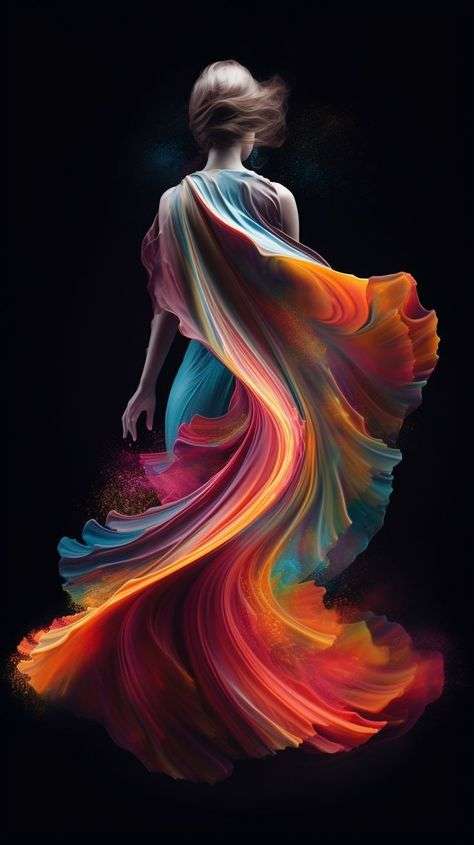
| Author Notes |
"She takes just like a woman
She makes love just like a woman And she aches just like a woman But she breaks just like a little girl" - Bob Dylan - Just Like a Woman Gogyohka is a five-line free-style Japanese poetic form with no strict rules on syllable count but as brief as possible. Any theme. Lines are grammatically connected. Alliteration, personification, and metaphor are okay but never rhyme. Japanese poets have written gogyohka since the 1910s. However, they did not name the form until 1983 by poet Enta Kusakabe. source = writers digest source=wikipedia Thank you for taking the time to read and review my poem. Gypsy picture from pinterest |
![]()
By Gypsy Blue Rose

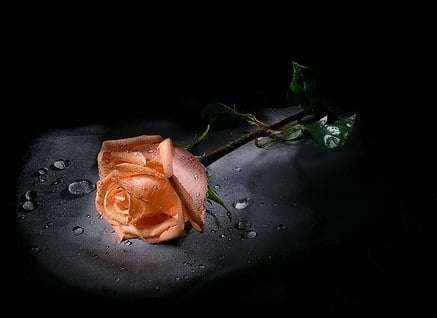
| Author Notes |
After my husband left me, I lost the will to live. I grieved the loss to the point that I didn't want to live, but God never left my side and He is the reason why I am still here to tell the story. I moved on and in time I found joy and peace.
National Suicide Prevention Crisis Number 988 Thank you for reading and reviewing my poem, Gypsy |
![]()
By Gypsy Blue Rose


| Author Notes |
Gogyohka is a five-line free-style Japanese poetic form with no strict rules on syllable count but as brief as possible. Any theme. Lines are grammatically connected. Alliteration, personification, and metaphor are okay. Japanese poets have written gogyohka since the 1910s. However, they did not name the form until 1983 by poet Enta Kusakabe. === source = writers digest ===source=wikipedia
Thank you for taking the time to read and review my poem.         

glitter-graphics.com |
![]()
By Gypsy Blue Rose

| Author Note: | For my friend, James ( Jumbo J ) |
unbothered by chilly morn or night,
he's grateful for nature's pleasures
and his friends, creatures of paradise,
some chirping to chime-songs
and some nipping at his toes

| Author Notes |
Gogyohka is a five-line free-style Japanese poetic form with no strict rules on syllable count but as brief as possible. Any theme. Lines are grammatically connected. Alliteration, personification, and metaphor are okay but never rhyme. Japanese poets have written gogyohka since the 1910s. However, they did not name the form until 1983 by poet Enta Kusakabe. === source = writers digest ===source=wikipedia
Thank you for taking the time to read and review my poem.         

glitter-graphics.com |
![]()
By Gypsy Blue Rose
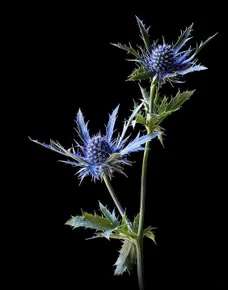
| Author Notes |
Tanka is a Japanese unrhymed poem having about 12 to 31 syllables usually arranged in five lines and read in about two breaths in length when read aloud. The first poets who wrote tanka imitated the Japanese models of a 5-7-5-7-7 syllabic structure in five lines. This resulted in poems that were too long in comparison to Japanese tanka. The first tanka were padded or chopped to meet the fixed number of syllables. Additionally, the third line must transition from the descriptive and image-focused beginning lines into a reflective metaphor, simile, or personification for the closing lines. The subject matter varies, but most tanka are emotionally stirring or profound, and many are about love. click here if you want to read modern tanka examples === click here to read Tanka Society of America === click here if you want to read modern tanka rules
Thank you very much for your time and kind review. Gypsy "The poet waits quietly to paint the unsaid." |
![]()
By Gypsy Blue Rose
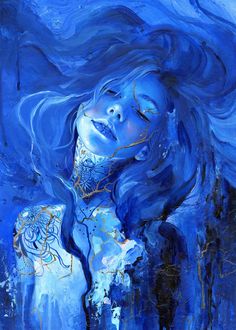
| Author Note: | title is a bob dylan song |
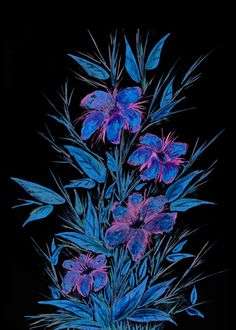
| Author Notes |
"she opened a book of poems every word rang true pouring off of every page like it was written in my soul from me to you tangled up in blue" - "Tangled Up in Blue" - song by Bob Dylan click for lyrics Thank you all for reading and reviewing my poem, Gypsy |
![]()
By Gypsy Blue Rose

| Author Note: | Belated Happy Birthday Poem for Karenina |
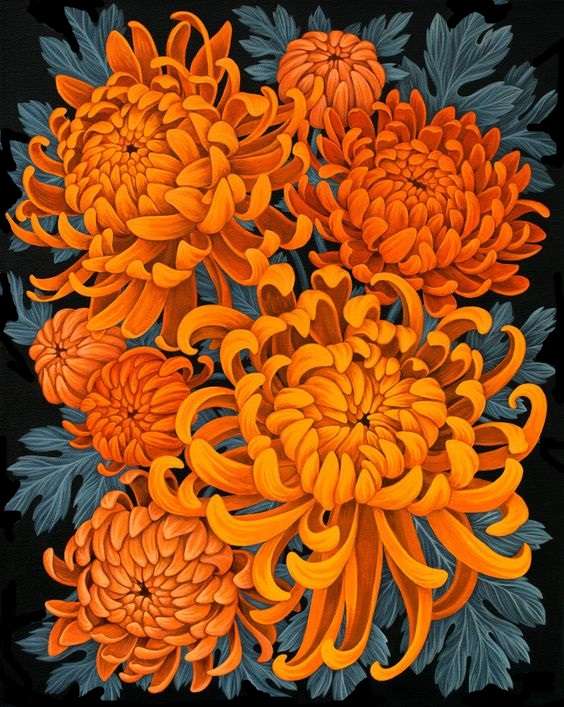
| Author Notes |
"Not all of us can do great things. But we can do small things with great love." - Mother Teresa
I dedicate this poem to my good friend, Karenina. She is one of the kindest fanstory friends I have. I'm very grateful for all she does. November is her birthday month. Happy birthday, Karenina! Chrysanthemums (mums) are November's birth flower The phrase, "Peace and Love" was popular in the 60s, it referred to the hippie ideal of peace, free love, and respect for nature. I know all the baby boomers know that. Tanka is a Japanese unrhymed poem having about 12 to 31 syllables usually arranged in five lines. The syllable count is 31 syllables OR LESS. The first English poets who wrote tanka imitated the Japanese models of a 5-7-5-7-7 syllabic structure resulting in Tanka poems that were too long in comparison to Japanese tanka because Japanese syllables are shorter than English syllables. The third line transitions from the descriptive and image-focused beginning lines into a reflective metaphor, simile, or personification for the closing lines. The subject matter varies, but most tanka are emotionally stirring or profound, and many are about love. click here if you want to read modern tanka examples === click here to read Tanka Society of America === click here if you want to read modern tanka rules Thank you very much for your time to read my poem for Karenina, Gypsy "The poet waits quietly to paint the unsaid." pictures from pinterest |
![]()
By Gypsy Blue Rose
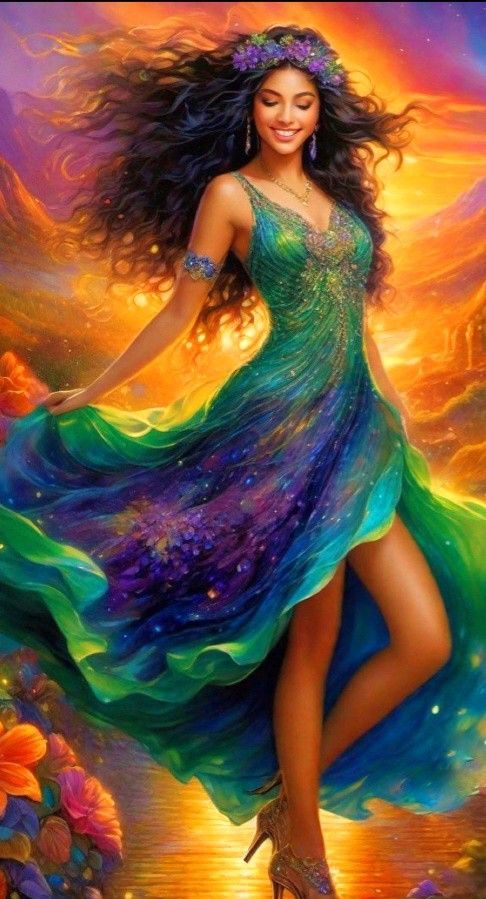
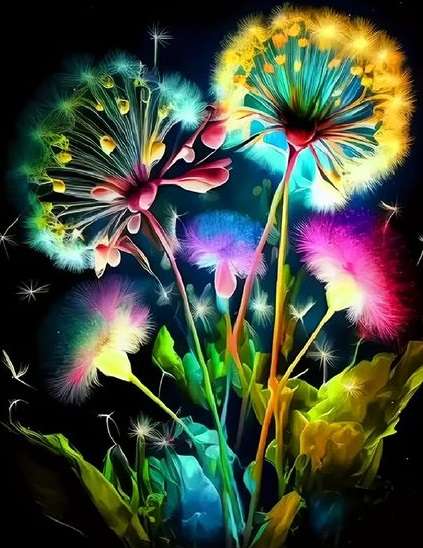
| Author Notes |
Gogyohka is a five-line free-style Japanese poetic form with no strict rules on syllable count but as brief as possible. Any theme. Lines are grammatically connected. Alliteration, personification, and metaphor are okay but never rhyme. Japanese poets have written gogyohka since the 1910s. However, they did not name the form until 1983 by poet Enta Kusakabe. === source = writers digest ===source=wikipedia
Thank you for taking the time to read and review my poem. Gypsy pictures from pinterest |
![]()
By Gypsy Blue Rose
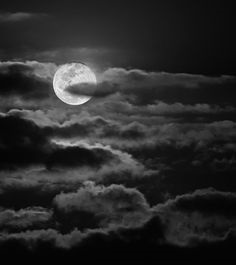
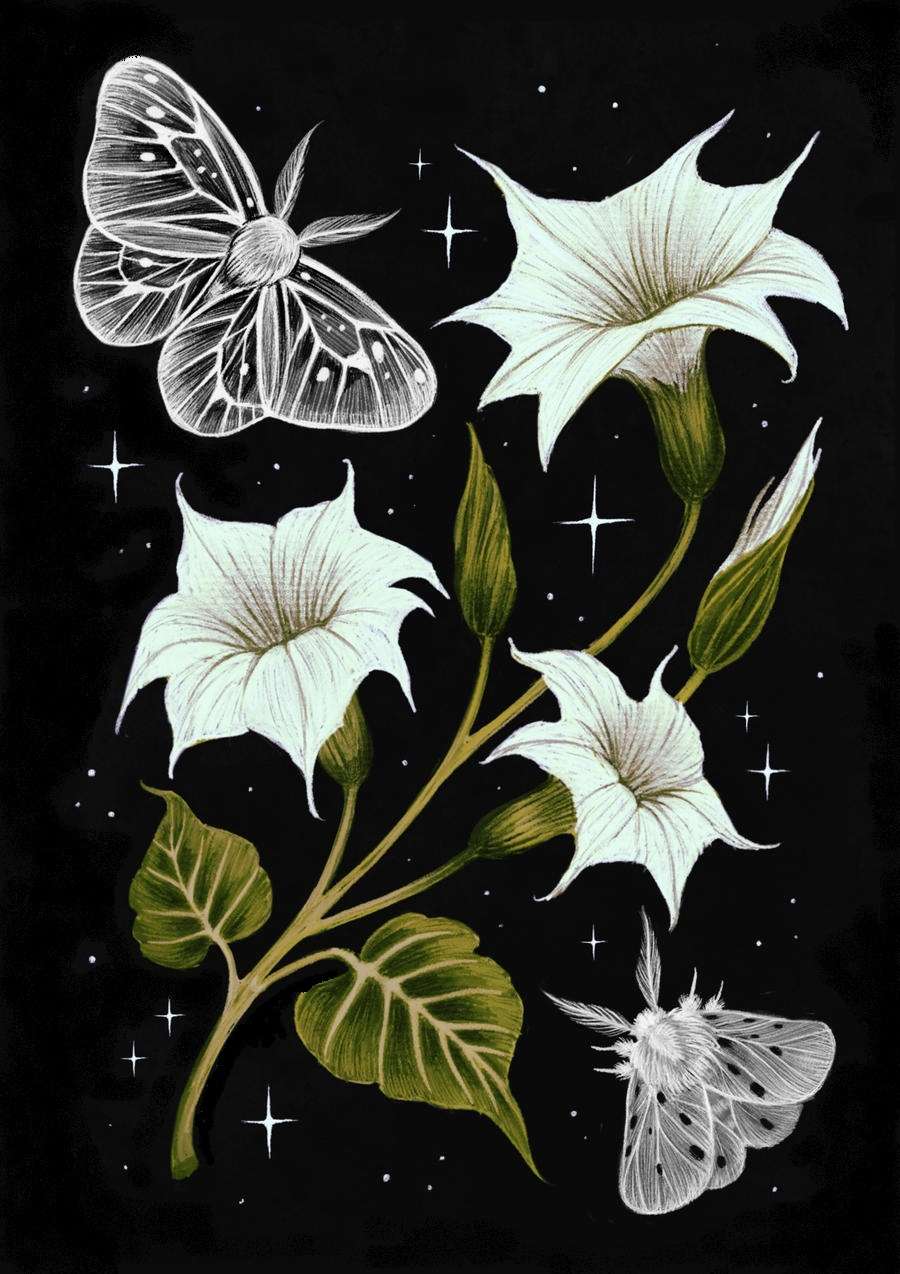
| Author Notes |
Tanka is a Japanese unrhymed poem having about 12 to 31 syllables usually arranged in five lines. The syllable count is 31 syllables OR LESS. The first English poets who wrote tanka imitated the Japanese models of a 5-7-5-7-7 syllabic structure resulting in Tanka poems that were too long in comparison to Japanese tanka because Japanese syllables are shorter than English syllables. The third line transitions from the descriptive and image-focused beginning lines into a reflective metaphor, simile, or personification for the closing lines. The subject matter varies, but most tanka are emotionally stirring or profound, and many are about love. click here if you want to read modern tanka examples === click here to read Tanka Society of America === click here if you want to read modern tanka rules
Thank you very much for your time and kind review. Gypsy "The poet waits quietly to paint the unsaid. picture from Pinterest -- bottom flower is a moonflower |
![]()
By Gypsy Blue Rose
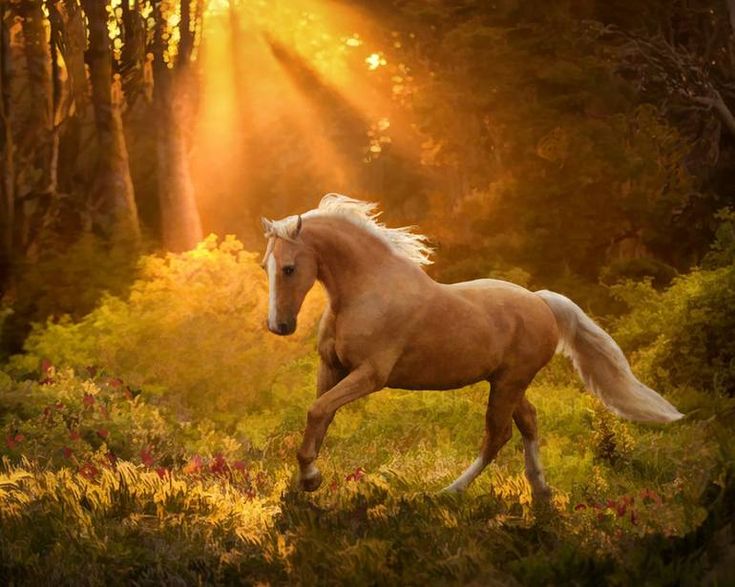
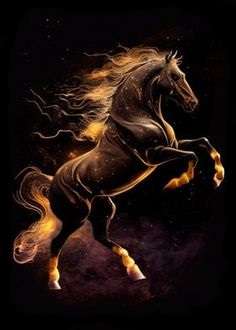
| Author Notes |
Tanka is a Japanese unrhymed poem having about 12 to 31 syllables usually arranged in five lines. The syllable count is 31 syllables OR LESS. The first English poets who wrote tanka imitated the Japanese models of a 5-7-5-7-7 syllabic structure resulting in Tanka poems that were too long in comparison to Japanese tanka because Japanese syllables are shorter than English syllables. The third line transitions from the descriptive and image-focused beginning lines into a reflective metaphor, simile, or personification for the closing lines. The subject matter varies, but most tanka are emotionally stirring or profound, and many are about love. click here if you want to read modern tanka examples === click here to read Tanka Society of America === click here if you want to read modern tanka rules
Thank you very much for your time and kind review. Gypsy "The poet waits quietly to paint the unsaid. pictures from pinterest |
![]()
By Gypsy Blue Rose


| Author Notes |
The Big Dipper consists of seven bright stars of the constellation Ursa Major. It always points to the North Star. The North Star is in the same location every night from dusk to dawn, neither rising nor setting. It's a good point of reference to find your way wherever you are.
'Drops of Jupiter' is the title of a song I like by the band Train, it's not related to the poem. Tanka is a Japanese unrhymed poem having about 12 to 31 syllables usually arranged in five lines. The syllable count is 31 syllables OR LESS. The first English poets who wrote tanka imitated the Japanese models of a 5-7-5-7-7 syllabic structure resulting in Tanka poems that were too long in comparison to Japanese tanka because Japanese syllables are shorter than English syllables. The third line transitions from the descriptive and image-focused beginning lines into a reflective metaphor, simile, or personification for the closing lines. The subject matter varies, but most tanka are emotionally stirring or profound, and many are about love. click here if you want to read modern tanka examples === click here to read Tanka Society of America === click here if you want to read modern tanka rules Thank you very much for your time and kind review. Gypsy "The poet waits quietly to paint the unsaid. pictures from pinterest |
![]()
By Gypsy Blue Rose
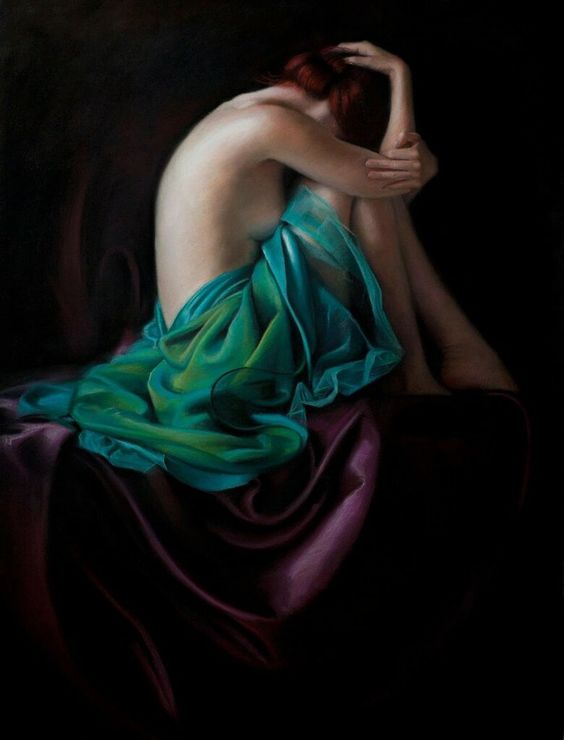
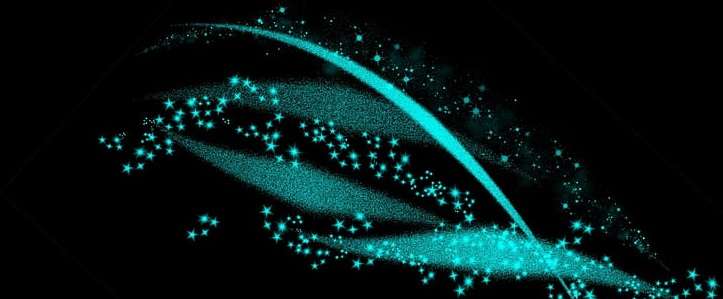
| Author Notes |
Tanka is a Japanese unrhymed poem having about 12 to 31 syllables usually arranged in five lines. The syllable count is 31 syllables OR LESS. The first English poets who wrote tanka imitated the Japanese models of a 5-7-5-7-7 syllabic structure resulting in Tanka poems that were too long in comparison to Japanese tanka because Japanese syllables are shorter than English syllables. The third line transitions from the descriptive and image-focused beginning lines into a reflective metaphor, simile, or personification for the closing lines. The subject matter varies, but most tanka are emotionally stirring or profound, and many are about love. click here if you want to read modern tanka examples === click here to read Tanka Society of America === click here if you want to read modern tanka rules
Thank you very much for your time and kind review. Gypsy "The poet waits quietly to paint the unsaid picture from pinterest |
![]()
By Gypsy Blue Rose
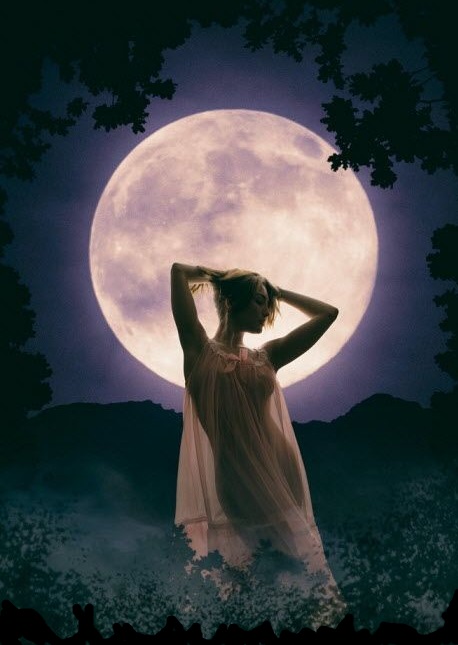
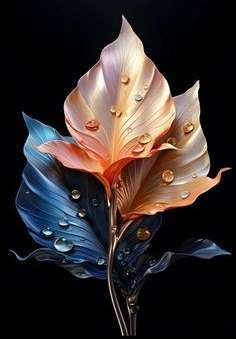
| Author Notes |
Tanka is a Japanese unrhymed poem having about 12 to 31 syllables usually arranged in five lines. The syllable count is 31 syllables OR LESS. The first English poets who wrote tanka imitated the Japanese models of a 5-7-5-7-7 syllabic structure resulting in Tanka poems that were too long in comparison to Japanese tanka because Japanese syllables are shorter than English syllables. The third line transitions from the descriptive and image-focused beginning lines into a reflective metaphor, simile, or personification for the closing lines. The subject matter varies, but most tanka are emotionally stirring or profound, and many are about love. click here if you want to read modern tanka examples === click here to read Tanka Society of America === click here if you want to read modern tanka rules
Thank you very much for your time and kind review. Gypsy "The poet waits quietly to paint the unsaid. pictures from pinterest |
![]()
By Gypsy Blue Rose

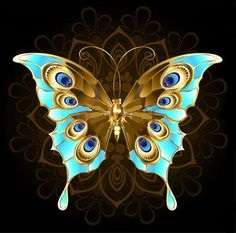
| Author Notes |
Gogyohka is a five-line free-style Japanese poetic form with no strict rules on syllable count but as brief as possible. Any theme. Lines are grammatically connected. Alliteration, personification, and metaphor are okay but never rhyme. Japanese poets have written gogyohka since the 1910s. However, they did not name the form until 1983 by poet Enta Kusakabe. === source = writers digest ===source=wikipedia
Thank you for taking the time to read and review my poem. Gypsy "Poetry heals the wounds inflicted by reason." - Novalis pictures from pinterest |
![]()
By Gypsy Blue Rose

Her Majesty's

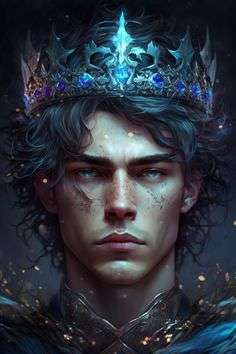
| Author Notes |
Gogyohka is a five-line free-style Japanese poetic form with no strict rules on syllable count but as brief as possible. Any theme. Lines are grammatically connected. Alliteration, personification, and metaphor are okay but never rhyme. Japanese poets have written gogyohka since the 1910s. However, they did not name the form until 1983 by poet Enta Kusakabe. === source = writers digest ===source=wikipedia
Thank you for taking the time to read and review my poem. Gypsy |
![]()
By Gypsy Blue Rose

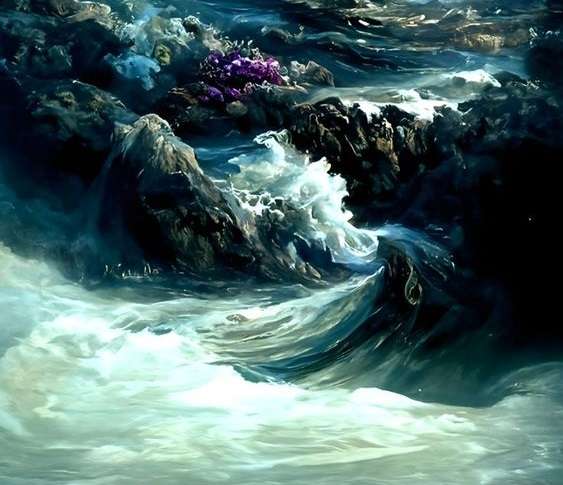
| Author Notes |
Some lovers seek what they are not, like waves yearning for land.
Tanka is a Japanese unrhymed poem having about 12 to 31 syllables usually arranged in five lines. The syllable count is 31 syllables OR LESS. The first English poets who wrote tanka imitated the Japanese models of a 5-7-5-7-7 syllabic structure resulting in Tanka poems that were too long in comparison to Japanese tanka because Japanese syllables are shorter than English syllables. The third line transitions from the descriptive and image-focused beginning lines into a reflective metaphor, simile, or personification for the closing lines. The subject matter varies, but most tanka are emotionally stirring or profound, and many are about love. click here if you want to read modern tanka examples === click here to read Tanka Society of America === click here if you want to read modern tanka rules Thank you very much for your time and kind review. Gypsy "The poet waits quietly to paint the unsaid. pictures from pinterest |
![]()
By Gypsy Blue Rose

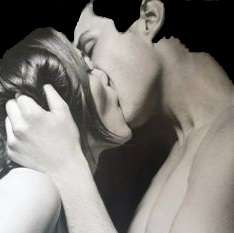
| Author Notes |
Tanka is a Japanese unrhymed poem having about 12 to 31 syllables usually arranged in five lines. The syllable count is 31 syllables OR LESS. The first English poets who wrote tanka imitated the Japanese models of a 5-7-5-7-7 syllabic structure resulting in Tanka poems that were too long in comparison to Japanese tanka because Japanese syllables are shorter than English syllables. The third line transitions from the descriptive and image-focused beginning lines into a reflective metaphor, simile, or personification for the closing lines. The subject matter varies, but most tanka are emotionally stirring or profound, and many are about love. click here if you want to read modern tanka examples === click here to read Tanka Society of America === click here if you want to read modern tanka rules
Thank you very much for your time and kind review. Gypsy "The poet waits quietly to paint the unsaid. pictures from pinterest |
![]()
By Gypsy Blue Rose
 Warning: The author has noted that this contains the highest level of sexual content.
Warning: The author has noted that this contains the highest level of sexual content.

| Author Notes |
Tanka is my favorite Japanese poetic form. It's meant to be romantic and passionate. It was created in the 8th century and used in the Japanese Imperial Court. It was used for lovers after a night together, each one wrote a tanka poem for the other. Most of the tanka poets are women. I feel a kinship with these women who were as passionate as I am.
Tanka is a Japanese unrhymed poem having about 12 to 31 syllables usually arranged in five lines. The syllable count is 31 syllables OR LESS. The first English poets who wrote tanka imitated the Japanese models of a 5-7-5-7-7 syllabic structure resulting in Tanka poems that were too long in comparison to Japanese tanka because Japanese syllables are shorter than English syllables. The third line transitions from the descriptive and image-focused beginning lines into a reflective metaphor, simile, or personification for the closing lines. The subject matter varies, but most tanka are emotionally stirring or profound, and many are about love. click here if you want to read modern tanka examples === click here to read Tanka Society of America === click here if you want to read modern tanka rules Thank you very much for your time and kind review. Gypsy "The poet waits quietly to paint the unsaid. pictures from pinterest |
![]()
By Gypsy Blue Rose

| Author Note: | poem in black font in my author notes |
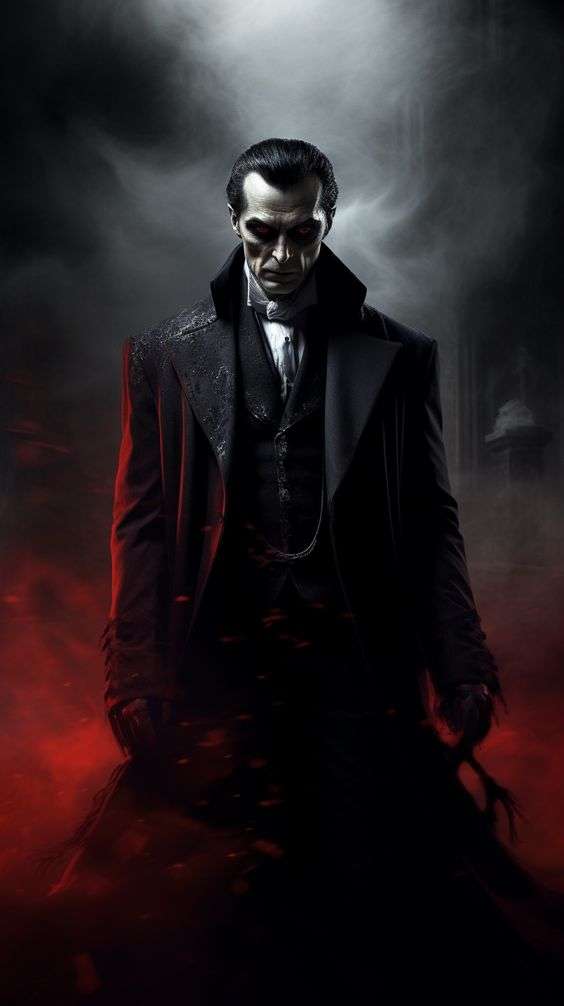

| Author Notes |
"I have crossed oceans of time to find you." - Dracula, Bram Stoker
thirst and infinite longing through the wavering path in the dark riverbanks where eternal blood flows and savage hunger Tanka is my favorite Japanese poetic form. It's meant to be romantic and passionate. It was created in the 8th century and used in the Japanese Imperial Court. It was used for lovers after a night together, each one wrote a tanka poem for the other. Most of the tanka poets are women. I feel a kinship with these women who were as passionate as I am. Tanka is a Japanese unrhymed poem having about 12 to 31 syllables usually arranged in five lines. The syllable count is 31 syllables OR LESS. The first English poets who wrote tanka imitated the Japanese models of a 5-7-5-7-7 syllabic structure resulting in Tanka poems that were too long in comparison to Japanese tanka because Japanese syllables are shorter than English syllables. The third line transitions from the descriptive and image-focused beginning lines into a reflective metaphor, simile, or personification for the closing lines. The subject matter varies, but most tanka are emotionally stirring or profound, and many are about love. click here if you want to read modern tanka examples === click here to read Tanka Society of America === click here if you want to read modern tanka rules Thank you very much for your time and kind review. Gypsy "The poet waits quietly to paint the unsaid. pictures from pinterest |
![]()
By Gypsy Blue Rose
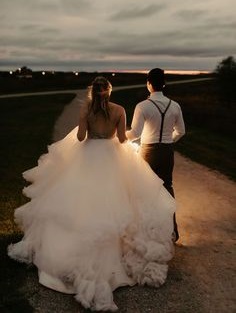

| Author Notes |
Gogyohka is a five-line free-style Japanese poetic form with no strict rules on syllable count but as brief as possible. Any theme. Lines are grammatically connected. Alliteration, personification, and metaphor are okay but never rhyme. Japanese poets have written gogyohka since the 1910s. However, they did not name the form until 1983 by poet Enta Kusakabe. === source = writers digest ===source=wikipedia
Thank you for taking the time to read and review my poem. Gypsy "Poetry heals the wounds inflicted by reason." - Novalis pictures from pinterest |
![]()
By Gypsy Blue Rose
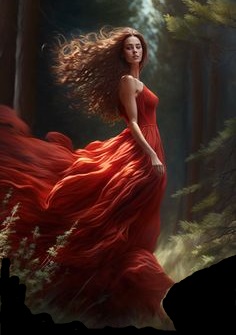

| Author Notes |
Gogyohka is a five-line free-style Japanese poetic form with no strict rules on syllable count but as brief as possible. Any theme. Lines are grammatically connected. Alliteration, personification, and metaphor are okay but never rhyme. Japanese poets have written gogyohka since the 1910s. However, they did not name the form until 1983 by poet Enta Kusakabe. === source = writers digest ===source=wikipedia
Thank you for taking the time to read and review my poem. Gypsy "Poetry heals the wounds inflicted by reason." - Novalis pictures from pinterest |
![]()
By Gypsy Blue Rose
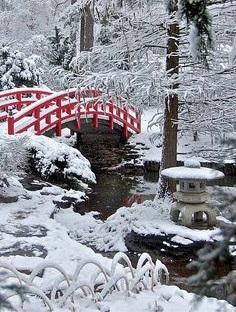

| Author Notes |
Gogyohka is a five-line free-style Japanese poetic form with no strict rules on syllable count but as brief as possible. Any theme. Lines are grammatically connected. Alliteration, personification, and metaphor are okay but never rhyme. Japanese poets have written gogyohka since the 1910s. However, they did not name the form until 1983 by poet Enta Kusakabe. === source = writers digest ===source=wikipedia
Thank you for taking the time to read and review my poem. Gypsy "Poetry heals the wounds inflicted by reason." - Novalis pictures from pinterest |
![]()
By Gypsy Blue Rose
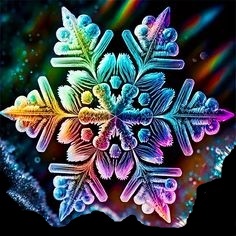
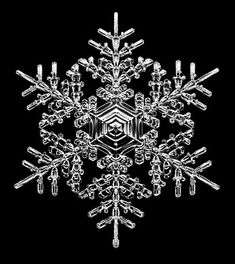
| Author Notes |
Bigotry = intolerant or hateful toward people whose race, ethnicity, religion, gender, sexual orientation, etc., is different from the person's own.
Gogyohka is a five-line free-style Japanese poetic form with no strict rules on syllable count but as brief as possible. Any theme. Lines are grammatically connected. Alliteration, personification, and metaphor are okay but never rhyme. Japanese poets have written gogyohka since the 1910s. However, they did not name the form until 1983 by poet Enta Kusakabe. === source = writers digest ===source=wikipedia Thank you for taking the time to read and review my poem. Gypsy "Poetry heals the wounds inflicted by reason." - Novalis pictures from pinterest |
![]()
By Gypsy Blue Rose

| Author Note: | For Rules, Please Read My Author Notes |
thirsty black-capped chickadee
perched on a bare bough
by the frozen lake
wishes for a sip
of spring water
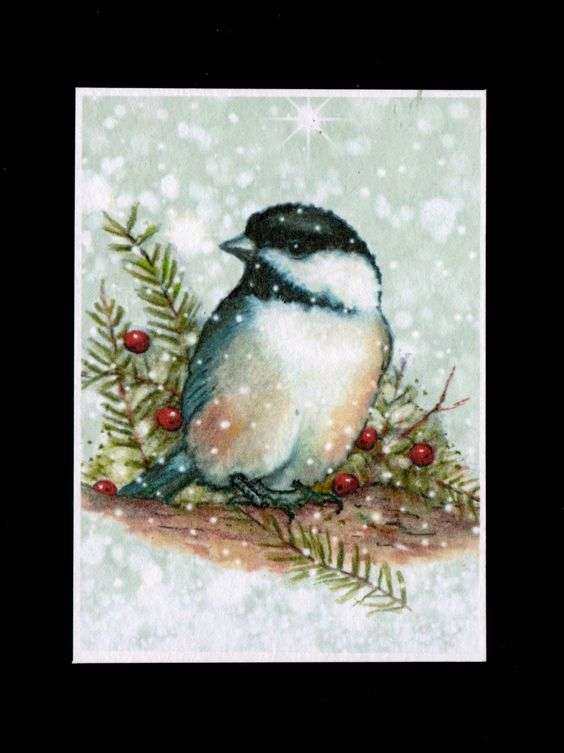
| Author Notes |
Tanka is my favorite Japanese poetic form. It's meant to be romantic and passionate. It was created in the 8th century and used in the Japanese Imperial Court. It was used for lovers after a night together, each one wrote a tanka poem for the other. Most of the tanka poets are women. I feel a kinship with these women who were as passionate as I am.
Tanka is a Japanese unrhymed poem having about 12 to 31 syllables usually arranged in five lines. The syllable count is 31 syllables OR LESS. The first English poets who wrote tanka imitated the Japanese models of a 5-7-5-7-7 syllabic structure resulting in Tanka poems that were too long in comparison to Japanese tanka because Japanese syllables are shorter than English syllables. The third line transitions from the descriptive and image-focused beginning lines into a reflective metaphor, simile, or personification for the closing lines. The subject matter varies, but most tanka are emotionally stirring or profound, and many are about love. click here if you want to read modern tanka examples === click here to read Tanka Society of America === click here if you want to read modern tanka rules Thank you very much for your time and kind review. Gypsy "The poet waits quietly to paint the unsaid. pictures from pinterest |
![]()
By Gypsy Blue Rose

| Author Note: | Rules in author notes |
memories of you
lay dormant in the attic
midst dust, dead flowers,
and empty heart boxes
soused with scent of betrayal
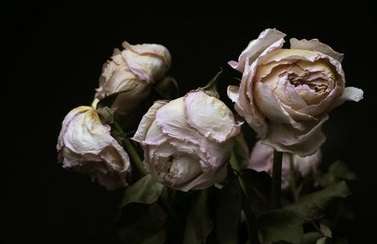
| Author Notes |
Tanka is my favorite Japanese poetic form. It's meant to be romantic and passionate. It was created in the 8th century and used in the Japanese Imperial Court. It was used for lovers after a night together, each one wrote a tanka poem for the other. Most of the tanka poets are women. I feel a kinship with these women who were as passionate as I am.
Tanka is a Japanese unrhymed poem having about 12 to 31 syllables usually arranged in five lines. The syllable count is 31 syllables OR LESS. The first English poets who wrote tanka imitated the Japanese models of a 5-7-5-7-7 syllabic structure resulting in Tanka poems that were too long in comparison to Japanese tanka because Japanese syllables are shorter than English syllables. The third line transitions from the descriptive and image-focused beginning lines into a reflective metaphor, simile, or personification for the closing lines. The subject matter varies, but most tanka are emotionally stirring or profound, and many are about love. click here if you want to read modern tanka examples === click here to read Tanka Society of America === click here if you want to read modern tanka rules Thank you very much for your time and kind review. Gypsy "The poet waits quietly to paint the unsaid. pictures from pinterest |
![]()
By Gypsy Blue Rose
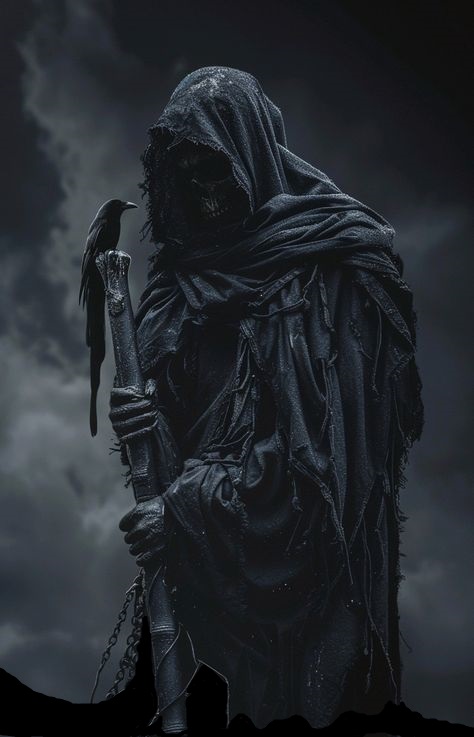
| Author Note: | dedicated to Dean Kuch. It's written from a Zen Buddhism point of view |

| Author Notes |
Dedicated to Dean Kuch, FanStory's Horror Master. May he rest in peace.
This week, we are writing death haiku/or tanka for the club. If you want to join us, click the CLUBS link below and look for the HAIKU CLUB. Everyone is welcome. Don't hesitate to contact me if you need help. JISEI (death poem), is a genre of Japanese poetry that offers a reflection on death coupled with a meaningful observation on life. It originated in Zen Buddhism The poem's structure can be written in haiku form - 5/7/5 syllables OR LESS, or - tanka form 5/7/5/7/7 syllables OR LESS. Death poems are typically graceful, natural, and emotionally neutral. Death is described as the imminent death of the poet OR metaphorically references such as sunsets, twilight, autumn, barren fields, falling leaves, bared trees, etc ... to suggest the transience of life. to see source click here Thank you for reading and reviewing my poem. Gypsy Pictures from my Pinterest account. Poem and presentation by Gypsy Blue Rose COPYWRITE@2024 |
|
You've read it - now go back to FanStory.com to comment on each chapter and show your thanks to the author! |
![]()
| © Copyright 2015 Gypsy Blue Rose All rights reserved. Gypsy Blue Rose has granted FanStory.com, its affiliates and its syndicates non-exclusive rights to display this work. |
© 2015 FanStory.com, Inc. All Rights Reserved. Terms under which this service is provided to you. Privacy Statement